Cartier “8” (Eight Days) with luminous dial/hands. Image Credit: SJX
‘Each of The Known Cartier Eight Day Wristwatches’
By Charlie Dunne
According to Franco Cologni, Cartier introduced the Eight-Day Cartier wristwatch in [circa] 1931. It was a rich decade in which several models were born such as the Tank Étanche, the introduction of Cartier Reversos, as well as the introduction of stylized Vendôme lugs. However, many of the iconic timepieces have greatly overshadowed a small chapter within the prestigious retailer’s history. It is believed that less than 10 examples in all metals were produced, some of which would be sold years after the earliest models. While the exact details on production, case metal, and dates have changed over the years, this article will aim to provide context serving as an overview of these underappreciated timepieces.
When asked about the significance of these timepieces, best-selling author of ‘The Cartiers’, Francesca Cartier Brickell contextualized the era in which many of these were introduced:
“To put the development of this watch in context, the 1930s was a period of great innovation for the Cartiers - it was the decade when they patented more new products than any other. This was partly a result of the Great Depression which had severely hurt their business and forced them to come up with new and exciting products to tempt clients. It was also a time when high jewellery items - like the dazzling diamond necklaces and bandeaus that had been so popular in jazz-age America - were considered inappropriate by many, so the Cartiers focused on more functional, practical pieces like watches (even if they were ones with a groundbreaking 8-day Lecoultre 124 movement!).”
‘The Cartiers: The Untold Story of the Family Behind the Jewelry Empire’ by Francesca Cartier Brickell
One common misconception that had remarkably been repeated throughout the 2000s is that “only two other Eight-Day Cartier Tanks have been seen at auction.” This was not the case throughout the 1990s (and repeated during the 21st century). To date, on at least 14 separate occasions Eight-Day Cartier wristwatches have been offered publicly. Note: Information is subject to change upon any future insights which are offered.
According to literature, one example was produced in platinum (1). The whereabouts of this specific timepiece is publicly unknown. However, on at least one occasion there has been a separate example which was sold publicly.
Among the examples that have surfaced, the production consists of the following by metal. One model has appeared in a steel case, which is the only known exception to Cartier Eight-Day wristwatches which were produced in precious metals. There were also two purported examples in white gold, which can be seen in Osvaldo Patrizzi's ‘‘The Magical White Cartier Bianco’.
Most frequently, the models were born in yellow and/or pink cases. At least seven have been identified. There have been at least six confirmed examples sold publicly, with the seventh being sold privately. One of the examples in pink gold examples surfaced at auction was accompanied by a luminous dial, and furthermore, it is one of two examples with a sole “8” dial. It appears that at most two bear no decoration of “8” or “EIGHT DAYS” on the dial (along with one model that has been offered twice with presumably a redone dial). These examples will feature a cursive Cartier logo with painted Arabic numerals. Most dials will feature the traditional, thick-Roman numerals that are painted in radial format, often with the decoration “EIGHT DAYS”, with a standard “Cartier” font. Some dials will be absent, while others will include the text “France” below 6 o’clock. One such model from 1958 with a decorated “EIGHT DAYS”, “France” dial has not been sold publicly at auction.
Note: The likelihood that some examples have appeared in a different state and are the same model is highly probable, as many have either had dials restored, or no publicly documented case/movement numbers during and after the time of sale. The author does not claim to have explicit insight on authenticity, market value, current whereabouts, nor inside knowledge of the timepieces within this article. The information has been gathered through auction houses, publications, and collectors. All primary source material and information will be cited within the article. Any additional information and/or photographs of these timepieces are encouraged to be shared with the author to improve and update the research on an incremental basis. The author can be contacted by email at charlie@strictlyvintagewatches.com.
Cartier Clocks: A Precursor to The Eight-Day Wristwatch
1920 Day and Night Comet Clock with Eight Day movement made by Maurice Coüet (Nils Herrmann, Cartier Collection © Cartier) (Source Revolution Watch)
Beginning in weight-and-pendulum-driven grandfather clocks, the “eight-day” provided owners with a new-found convenience of winding only once per week compared to the lesser expensive 30-hour clocks of the era. Within antique clock collecting, there are endless opportunities to collect within the genre, along with a spectrum of manufacturers.
Among some of the most sought-after examples include the later mechanical creations from Cartier, specifically in the form of desk clocks. Before the eight-day movements were miniaturized for wristwatches, they lived in Cartier’s clocks. A fantastic assortment (many of which include eight-day movements) are highlighted in a conversation between Francesca Cartier Brickell and Marie-Cecile Cisamolo titled “The Cartiers and Their Clocks”. The discussion centers around historic examples, as well as one of the largest collections of Cartier clocks offered Christie’s ‘A Lifetime of Collecting – 101 Cartier Clocks”. On several occasions, Cisamolo and Cartier Brickell speak to the brilliance of prestigious clockmaker Maurice Coüet. His extraordinary creations remain unparalleled, particularly those which were influenced by nature in the themed “Comet” clocks. Other Cartier clocks drew inspiration from architecture, culture, and history. These timepieces are among the most remarkable creations by not only the Parisian firm but of all time.
Franklin Delano Roosevelt’s Cartier “Victory Clock” featuring an Eight-Day Movement. Provenance: Given to FDR by Pierre Cartier. Image credit: Sotheby’s
Model A Mystery Clock made by Maurice Coüet featuring an Eight-Day Movement. Image credit: Revolution
Since their inception, these clocks have remained both highly sought after and exclusive. No expense was spared in creating these breathtaking creations. Noteworthy examples include the Model A Mystery Clock (of which John Pierpoint Morgan was the first client to purchase a model), in addition to President Franklin Delano Roosevelt’s “Victory Clock” which was given to him by Pierre Cartier on December 20th, 1943.
Maurice Coüet working on the immaculate crystal Chimaera clock circa 1927. Image credit: Revolution
Cartier 8-Day World Time Desk Clock. Image credit: Christie’s.
Cartier alarm, 8 days power reserve table clock, circa 1940. Image credit: Monaco Legend Auctions.
Cartier clock from 1913 which was reinterpreted in 2013. Made of platinum, gold, silver, gilded metal Translucent periwinkle-blue enamel over guilloche background, White enamel dial Rose-cut diamonds featuring a round 8-day movement. Image credit: Watch Pro Site.
Cartier Letter Opener (Paperknife) featuring an Eight-Day Watch. Christie’s London Important Clocks and Watches (July 4, 1990). Information courtesy of Sander Peeters.
Cartier 8 Day Folding Travel Clock (“Kodak”). Image credit Antiquorum Geneva.
While there were many Eight-Day Cartier clocks that were created, the lesser discussed Eight-Days are the Cartier wristwatches. Considering the average power reserve in mechanical wristwatches today is between 36-48 hours, the movements were certainly pushing the envelope in a period in which the wristwatch was beginning to be adopted within society. Like the early clocks, the wristwatches added convenience for the wearer to only be bothered in winding once a week. These were among the most significant time-only timepieces of the era and an intense undertaking from the LeCoultre firm who would produce the movements for a select few (including Cartier and Patek Philippe).
”
Observed Dial Variants
Observed models include the following attributes:
Numerals Style:
Thick, painted-Roman numerals, including '“EIGHT DAYS’ decoration (“France” below 6 o’clock).
Thick, painted-Roman numerals, including '“EIGHT DAYS’ decoration (absent of “France”).
Thin, painted-Roman numerals in reverse-radial format absent of Eight Days decoration (unconfirmed as original, and possibly later restored to thick, painted-Roman numerals).
Painted Arabic numerals, absent of Eight Days decoration.
Painted Arabic numerals, with enhanced “8 DAYS” decoration (one example and unconfirmed as original).
Thick, painted-Roman numerals, including painted “8” decoration absent of “France” (one known example).
Luminous Arabic numerals and baton markers, with painted “8” decoration (one known example).
Crowns:
Standard (non-sapphire) notched crown (most frequent).
Octagonal sapphire-cabochon crown with a flat and rounded surface (featured on one later model in white gold and replacement on early 1930s example in yellow gold.
Rounded sapphire-cabochon crown with flat surface (featured on one later yellow gold model from the late 1950s).
Hand Style:
Breguet Hands (most frequent).
Luminous Cathedral hands (one example).
Sword (épée) hands (featured in at least two later examples from the 1950s-1060s).
“EIGHT DAYS/France” in Platinum.
Movement No. Unknown / Case No. Unknown (Circa 1932)
.
Platinum Cartier “Eight Days” “France” dial. Image credit: ‘Cartier The Tank Watch’ by Franco Cologni
The original archive photograph of a platinum model is seen above featured within Franco Cologni’s ‘Cartier The Tank Watch’ on page 219, the watch features the most consistent attributes found within confirmed Cartier Eight-Day wristwatches: Breguet hands, painted-Roman numerals, “EIGHT DAYS” dial. The movement is cited as 11’’, and no movement/case numbers are provided. At this point in time, the example has not surfaced publicly.
“EIGHT DAYS” in White Gold.
Movement No. Unknown / Case No. Unknown (Circa 1934)
Cartier “EIGHT DAYS” in White Gold. Circa 1934. Image credit: ‘The Magical White Cartier Bianco’ by Osvaldo Patrizzi
Documented in Osvaldo Patrizzi’s ‘The Magical White Cartier Bianco’ is the first of two known Eight-Days in white gold. The watch is from Cartier France, and dates to 1934. It features the most common dial configuration with painted Roman numerals, and is decorated with “EIGHT DAYS”. The case measures 40mm in length by 22mm wide. At this point, the author cannot confirm whether the timepiece has ever been sold at a public auction.
No Dial Decoration “France” in White Gold. Sword hands, Octagonal Cabochon Crown
Movement No. Unknown / Case No. Unknown (Circa 1960)
White Gold Cartier Eight-Day absent of dial decoration. Circa 1960. Image credit: ‘The Magical White Cartier Bianco’ by Osvaldo Patrizzi
The second known Cartier Eight-Day wristwatch in white gold is again featured in ‘The Magical White Cartier Bianco’. The watch features slightly smaller dimensions than the previous model at 39.2mm x 21.7mm, and does not feature dial decoration of the Eight-Day power reserve. This watch is the youngest of the known examples, produced in 1960. It accompanies the épée (sword) hands and octagonal cabochon crown with a flat surface of the period. At this point, the author cannot confirm whether the timepiece has ever been sold at a public auction.
‘EIGHT DAYS/FRANCE” in Pink Gold. Sword hands, Round Cabochon Crown
Movement No. Unknown / Case No. Unknown (Circa 1958)
Never Sold at Auction.
Cartier “EIGHT DAYS’ dial with “France” at 6 o’clock, and sword hands. Image credit: John Goldberger.
The above example is one of only two known model to feature sword (épée) hands was shared on social media in March of 2021 by collector John Goldberger. A distinctive attribute of this timepiece is the rounded cabochon crown with a flat surface from the 1950s. One subtle detail to note is the dial’s “France” below 6 o’clock, which appears on some dials and is absent on others with the same painted Roman numeral layout. This watch is among the last known examples produced in 1958.
Image credit: @alessandro_fabbiani
Enhanced “8 DAYS” with Slanted Logo.
Movement No. Unknown / Case No. Unknown (Circa 1935)
Sotheby’s Geneva: Important Watches, Wristwatches & Clocks November 19th, 1992.
Enhanced “8 DAYS’ with Slanted ’Cartier’ font. “Circa 1935”. Image credit: Sotheby’s Geneva: Important Watches, Wristwatches & Clocks November 19th, 1992. Information provided by way of Arthur Pfister of Horlodata.
One public offering that had not been discovered in the initial research stage was provided by watch consultant and collector Arthur Pfister of Horlodata. Within Pfister’s impressive collection of watch-auction catalogues, he shed light on an additional entry that does not appear to correspond with other dials publicly offered. Within Sotheby’s Geneva: Important Watches, Wristwatches & Clocks (November 19th, 1992), Pfister shared an example to 1935, featuring a dial with slanted ’Cartier’ font, and an enhanced “8 DAYS’ with painted-Roman numerals. This example is cited by Sotheby’s ( and other lot descriptions of Cartier Eight-Days offered publicly) to have [English] import marks from 1935, along with what they describe as “the casemaker’s initials G.S. (George Stockwell)”. However, it is worth emphasizing insights provided through Francesca Cartier Brickell that Stockwell was not necessarily the casemaker, but rather an importer of fine watches based in Birmingham (8). This raises the point of provenance for models that bear Stockwell’s G.S. initials that the timepieces are attributed to the English Market (12). On the occasions in which slanted logo Eight-Days have been offered publicly, most dials accompany painted-Arabic numerals, and are absent of the eight-day decoration. No numbers are provided, and the movement is signed EWC, with five lines of text.
Note: While there are other outlier attributes within the small sample group of Cartier Eight-Day wristwatches, it is likely the enhanced “8 DAYS” dial had been redone at some point in time. It is unknown whether the timepiece came up for sale subsequent with a different dial.
“EIGHT DAYS/FRANCE” in Yellow Gold.
Movement No. 34865 Case 28829 (28829 - 6434 - 34685 [28830]) (Circa 1940)
Antiquorum Geneva: Important Modern & Vintage Timepieces (November 6, 2021)
Among the examples sold in recent years was the model auctioned at Antiquorum Geneva: Important Modern & Vintage Timepieces in November of 2021. The watch accompanied an 18k bracelet and measured at 22mm wide and 39mm lug-to-lug.
Speaking with Julien Schaerer, Managing Director and Watch Expert of Antiquorum, the watch had been in the possession of a Swiss collector for several years. Along with the Cartier Eight-Day, the collector consigned a number of important timepieces within the sale, including the Cartier “8” Day “Kodack” travel clock, and first-series Patek Philippe reference 1518 in yellow gold.
“Throughout the 1980s -2000s, the collector had heavily focused on finding design-oriented timepieces that strayed from the beaten path. He was not concerned or influenced by the trends outside of his own tastes and this can be seen in such watches from his collection like the Cartier Eight-Day. It was his vision and love for these timepieces which led him to acquire it when little was known about the Eight-Day movements.”
Image credit: Julien Shaerer
Schaerer would go on to emphasize his appreciation for Cartier’s creations, and the origins of these wristwatches:
“I love the [Cartier] clocks, and the Eight-Day’s origin comes from this chapter of the company. They excelled in the 1930s and helped introduce this testament of watchmaking by offering these historical wristwatches. It has always been an important timepiece, but now people are beginning to grasp the magnitude.”
The watch would go on to sell for $271,400. Antiquorum's lot essay was a benchmark in transparency. The movement number is provided as 34865 and the case number as 28829/6434/ 34685/28830. The EWC signature has two lines in a wavy format. In the detailed notes, the auction house mentions the case as having maintained strong form and hallmarks, and that the dial had been reprinted.
Image credit: Andrea Parmegiani.
18K yellow-gold Cartier Eight Day wristwatch sold at Antiquorum Geneva: Important Modern & Vintage Timepieces (November 6, 2021). Above images credited to Antiquorum.
”EIGHT DAYS” in 18K Pink Gold.
Movement No. 31646 / Case No. Not Cited (Circa 1941)
Christie's Geneva: Important Pocket Watches and Wristwatches (November 13, 2006)
Cartier ”EIGHT DAYS” in Pink Gold Cartier (Movement No. 31646). Image credit: Christie's Geneva 2006.
A more public example is the “EIGHT DAYS” dial Cartier “Magnum” with the case number 31646. Unlike the previous example, it doesn’t bear “France” on the lower dial. The case is 18k pink gold and measures 39mm x 22mm. The movement was made by “EWC - manufactured by Cartier Paris” with four lines of straight text.
It was documented within George Gordon’s book ‘Cartier: a century of Cartier wristwatches’, with the movement cited circa 1932 (2). However, it is not uncommon that movements would be cased/sold years later. For this reason, it is worth considering the more accurate dating based on its “manufactured” date in 1941 which was referenced later at auctions in 2006 and 2009.
Cartier “Eight Days” “Magnum in PG. Movement No. 31646. Image credit: ‘Cartier: a century of Cartier wristwatches’ by George Gordon.
”EIGHT DAYS” in Pink Gold “Magnum”.
Movement No. 31646 / Case No. Not Cited (Circa 1941)
Christie's Geneva: Important Watches Including A Connoisseur's Vision (November 16, 2009)
Cartier ”EIGHT DAYS” “Magnum” in Pink Gold. Image credit: John Goldberger
Image credit: Christie’s
Cartier “Eight Days” Movement No. 31646. Image credit: Ted Tsai (by way of Christie’s)
Sold in 2009 at Christie’s Geneva, the watch was accompanied by a “Cartier Duplicata of Certificate of Authenticity no. GE 2006-136 dated August 21, 2009 ([originally] issued in September 2006”. The lot essay also describes that color copies were “available confirming the production of the present watch in 1941”. The watch would hammer at $107,772.
It is referred to as both “Magnum” by the collector John Goldberger, and “Tank Allongée" by the auction house. Upon correspondence with Goldberger, he provided additional insightthat the watch had also surfaced in the a few decades prior.
”EIGHT DAYS” in Pink Gold “Magnum”.
Movement No. 31646 / Case No. Not Cited (Circa 1941)
Christie's New York Fine Clocks, Scientific Instruments, Watches and Wristwatches (October 27, 1988)
Cartier “Eight Days” Movement No. 31646 sold at Christie's New York Fine Clocks, Scientific Instruments, Watches and Wristwatches (October 27, 1988). Image courtesy of John Goldberger.
Lending assistance once again, Arthur Pfister was able to confirm the auction as Christie's New York Fine Clocks, Scientific Instruments, Watches and Wristwatches (October 27, 1988). According to the sales results he had provided, the watch is confirmed by serial number 31646 and resulted in a sale of $49,500. Pfister also provided context to the watch by way of its feature within the later Christie's Review of the Season, 1990 (Softcover).
Cartier “Eight Days” Movement No. 31646. Image credit: Christie's Review of the Season, 1990 (Softcover). Courtesy of Arthur Pfister (Horlodata).
“EIGHT DAYS/FRANCE” in “Yellow gold, pink gold”.
Movement No. Unknown. Case No. Unknown (CIRCA 1938).
Cartier Collection (Acquisition Unconfirmed)
Cartier “Eight Days” “France” dial. Image credit: WatchProSite (2010).
Very similar to the 1941 “Magnum” is an example published by JX Su on Watch Pro Site in 2010, and later Watches by SJX in 2013. This timepiece is cited as being from “circa 1938” and “yellow gold, pink gold”. Although a close resemblance, it is in fact, a different timepiece than the 1941 model upon noticing the dial’s “France” at 6 o’clock.
JX Su (SJX) emphasizes within the article the difference between the watch and a traditional Tank in that “the lugs have a sharp downward curve when viewed from the side. This is one of my [favorites] because it has an outstanding LeCoultre movement and is also quite modern in size due to the large calibre.” The publisher described that the watch, like all models, is powered by the double-barreled LeCoultre calibre 124. Within the article, an image of a LeCoultre signed movement featuring US import codes is provided by the user TJN.
LeCoultre cal. 124 with double barrels and 18 jewels. Featuring the US import code LXJ for LeCoultre. Image credit: WatchProSite (2010).
Additional sightings of the watch were made by Su during his coverage at a Cartier Exhibition in 2011.
Cartier “Eight Days”-“France” dial. Image credit: watchesbysjx.com (2013).
Image credit: ‘The Cartier Collection Timepieces’ by Franco Cologni
Image credit: Watchrology
No Dial Decoration. “18K” Gold.
Movement No. Unknown. Case No. Unknown (Circa 1930).
Sotheby's Geneva (November 19th, 2002)
The eighth occasion of a Cartier Eight-Day wristwatch appearing at auction occurred at Sotheby's Geneva November 19th, 2002. This was the third occasion in which a model surfaced absent of the “EIGHT DAYS” dial decoration. Although not numerically cited within the auction catalogue, the description indicates that the case numbers are hand stamped on the caseback. Consisting of some of the key attributes, the watch maintains the Tank Allongée case and blue Breguet hands. However, most peculiar is the thin-painted Roman numerals in the reverse format of what is typically seen within Cartier dials. It is possible that this dial had been repainted at some point before the appearance at auction,
The overall length of the case is cited as 39mm. The lot essay indicated that the watch is paired with an 18K yellow and pink gold deployant buckle. The movement is signed “European Watch Co Inc” with five lines of straight text.
No Dial Decoration - In “18K” Gold.
Sotheby’s Important Watches and Wristwatches (May 17th, 2005)
Movement No. Unknown. Case No. Unknown (Circa 1930).
Image credit: Sotheby's
Three years later in 2005, the same watch would be offered at Sotheby’s. During the second auction, it purportedly sold for $91,936 (9). The lot essay is consistent in dating the watch to 1930 and the timepiece maintains the same overall aesthetics and strap/deployant buckle.
Upon close observation, it is worth pointing out that the strap on the watch offered in Sotheby’s 2002/2005 bears striking resemblance to the example published by Watches by SJX (and Watch Pro Site). While only speculation, it is possible that the watch and strap auctioned in 2002/2005 was later subject to a dial restoration (a common occurrence with important timepieces within the Cartier collection).
It’s worth noting is the discrepancy from both auctions as the year attributed to 1930 vs 1938 in the SJX article, Additionally, within the auction catalogue one can notice discrepancies between the movement the aforementioned publication. The mainplate decoration features an arched “LeCoultre & Co.”, and US import code LXJ. The movement photograph within the 2002 auction catalogue features the more consistent horizontal “European Watch Co. Inc”. Based on the known photographs of movements featuring EWC branding, it is likely that the movement watermarked by the TJN email address was submitted for a visual reference.
“8” with Slanted Logo. Luminous Dial/Hands in Yellow Gold
Christie’s New York: Rare Watches & Important Discoveries (December 15, 2015)
Movement No. 34'693, Case No. 26'676, (CIRCA 1940)
Cartier “8” (Eight Days) with luminous dial/hands. Image Credit: SJX
Among the individuals who covet vintage Cartier is American collector and dealer Eric Ku. Ku’s passion for the French Maison include an array of vintage, contemporary and bespoke Cartier creations. Upon correspondence, Ku offered his appreciation for the inadequately discussed Cartier Eight Days models.
“The Cartier 8 Days Tank is amongst my favorite early vintage designs for its large case and contemporary proportions. The size was a result of the JLC Cal 124 being quite large with its twin barrels. I’m not sure the exact number produced but they are quite rare, only a handful that have surfaced to date. I purchased one at Christie’s and it is a treasured part of my collection.”
- Eric Ku
The timepiece is distinct in a few aspects. The dial is the only example known to feature luminous Arabic and baton numerals. It features luminous hands, instead of the traditional Breguet hands featured on other models. It is the only known example to include the numeral “8” instead of “EIGHT DAYS”.
During his time as Vice President, Senior Specialist for Christie's, Palm Beach-based watch dealer Eric Wind was involved in the sale. When asked about the subject of Cartier's Eight-Day wristwatches, he shared his optimism to discover a second example.
“The 8-day Tank became a grail for me because of the beautiful proportions and I dream to find one for my own collection one day, particularly in a white metal if possible! Just like I would love to add a vintage Patek Philippe with an 8-day movement to my collection!”
The watch is cited to have sold for a bargain at only $35,000.
“EIGHT DAYS’ in Steel.
Sotheby’s Geneva: Important Watches: Part I ( May 11, 2021)
Movement No. Not Cited. Case No. 70'881 (Circa 1935)
Unlike the other Eight Day Cartier wristwatches that have surfaced, this is the only model that is not in precious metal. The watch surfaced for public offer at Sotheby’s Geneva in May of 2021. No movement number is provided by the auction house. The case is numbered 70'881. The dimensions are noted as 21.7mm wide by 38.9mm lug-to-lug. In a period where many Cartier timepieces would see a rejuvenated interest at auction, the watch would perform well and hammer at $266,717.
No Dial Decoration. Missing Minute Hand. Cursive Logo In Yellow Gold
Movement No. Unknown, Case No. 70'881 (Circa 1935)
Christie’s South Kensington Clocks, Watches & Barometers (March 3, 1989)
Cartier 8 Day cover lot auctioned at Christie’s South Kensington Clocks, Watches & Barometers (March 3, 1989).
Above is one of the first known Eight-Day Cartier’s to come to auction. Its case is made of 18k yellow gold and the dial was seen with a painted-cursive logo and painted Arabic numerals during its first sale at Christie’s South Kensington, March 3, 1989. Notably, the dial is absent of the painted “EIGHT DAYS” and this would be seen in at least four auctions to throughout the late 80s and 90s. The condition of the watch in 1989 evidently shows a missing minute hand.
Highlighted in Michael Balfour’s book ‘The Classic Watch’, the watch is described as fetching $27,000, and that “the minute hand is missing and the general condition is not good”. Additionally, the movement and case are each shown in George Gordon book page 133, 289 featuring both hands, and on page 525 with one missing hand.
Lot essay from Christie’s South Kensington Clocks, Watches & Barometers (March 3, 1989).
Disassembled Cartier 8 Days without dial decoration and missing-minute hand. Movement No. Unknown Case No. 26677 33683 (26677 -37- 33683). Image credit: ‘Cartier: a century of Cartier wristwatches’ by George Gordon (page 525).
Minute hand replaced in 1989. “Case No. 26677. Men’s rectangular Cartier 8 day wristwatch, circa 1933. 18K yellow gold. Movement by European Watch & Clock Co., manufactured by Cartier Paris.” Image credit: ‘Cartier: a century of Cartier wristwatches’ by George Gordon (page 133).
No Dial Decoration. Cursive Logo In Yellow Gold. Octagonal Cabochon Crown.
Movement No. Not Cited. Case No. Not Cited (Circa 1931)
Antiquorum Geneva: The Art of Cartier (November 19, 1996)
Eight Days Wristwatch offered at The Magical Art of Cartier. Image credit: Antiquorum.
The Cartier would eventually find a replacement hand by the time it was featured in George Gordon’s 1989 book ‘Cartier: a century of Cartier wristwatches’ (5). Nine years later, a very similar model which appeared to be would be offered at Antiquorum New York within their December auction. According to Antiquorum’s lot essay, the watch accompanied a Cartier Certificate (No. 2185), and the movement is dated to “1931” (the same year attributed to the watch sold at Christie’s South Kensington). No movement, nor case numbers are cited within the lot essay. Yet, within the sale of the luminous “8” day dial sold at Christie’s 2015, an insight is revealed that alleges that the model is the same example sold in 1989 (4).
“Remarkably, only two other 8-day Cartier Tanks have been seen at auction. The first sold in 1989 and again in 1996 while Christie's sold the second in 2006 for 138,000 CHF and again in 2009 for 99,000 CHF.” - Excerpt from Christie’s New York (2015).
It is not cited that the previous crown had also been replaced in the lot essay, yet it is worth emphasizing that this specific watch features octagonal cabochon crowns that would come in the 1950s (10). An important note to highlight is that the auction offered this specific watch with Cartier Certificate no. 2185.
No Dial Decoration. Cursive Logo In Yellow Gold. Octagonal Cabochon Crown.
Movement No. 33683 Case No. 26677 (26677 -37- 33683) (Circa “1933”)
Sotheby's Important Watches New York October 26, 1992.
Cartier 8 Day wristwatch sold at Sotheby's Important Watches New York October 26, 1992
By the fourth occasion where a Cartier Eight-Day wristwatch had been offered publicly at auction in 1992, the industry believed that “possibly only four” models were produced by the brand (6). Within Sotheby's 1992 lot essay no movement/case numbers are included. Notes of the English import hallmarks are mentioned. Upon first impression, the timepiece sold three years prior at Christie’s South Kensington is quite similar in nature. First, there is an absence of “Eight DAYS”. Additionally, the cursive “Cartier” font, and Arabic numerals. However, the auction dates the timepiece to 1933, which is two years after the one which was auctioned at Antiquorum Geneva: The Art of Cartier of 1996, as well as the first publicly sold 8 Day at Christie’s South Kensington in 1989. Despite being attributed to “1933” within the lot essay, it is clear within the photo that the case number corresponds with 26677 (26677 -37- 33683) sold at Christie’s South Kensington!
Cartier 8 Day movement and caseback No. 26677 33683 (26677 -37- 33683) sold at Sotheby's Important Watches New York October 26, 1992.
No Dial Decoration. Cursive Logo In Yellow Gold. Octagonal Cabochon Crown.
Movement No. Not Cited. Case No. Not Cited (Circa “1931”)
Antiquorum New York: Contemporary, Limited Edition & Modern Collector's Watches (December 15, 1998)
Cartier 8 Day wristwatch without dial decoration. Image credit: Antiquorum New York (December 15, 1998)
Antiquorum New York: Contemporary, Limited Edition & Modern Collector's Watches (December 15, 1998). As seen within the example sold at both Christie’s South Kensington sale and Antiquorum’s The Magical Art of Cartier, both dials are void of “EIGHT DAYS” and feature the painted Arabic numerals. Once again, a watch which “entered in the registers in 1931”. However, Antiquorum indicates within the grading section “Hands: Later”. It is worth noting that the replacement of hands, and the refinishing of dials for that matter, was common practice during this era. Yet, with only a handful of Cartier 8 Days, the commonalities are worth considering.
Although recently cited in an auction house’s 2021 catalogue that 8 Day Cartier within both the Sotheby's 1992 and Antiquorum 1996 auctions are separate examples. Hypothetically, the watch from each of the aforementioned sources could be the same timepiece. Neither a movement number or case number is attributed to the watch within the 1996 auction catalog. Considering the octagonal crown that bears similarities to the changes made between the confirmed movement/case numbers within the 1989 Christie’s South Kensington sale, and this specific Antiquorum New York sale, at most which we can interpret from the facts are that the specific example that had been missing a minute hand was sold at two locations: Christie’s South Kensington (1989) and Antiquorum (1996). As for Antiquorum’s 1998 sale the previous note of Cartier’s certification comes back into play. Within the auction notes, this watch was also offered with the same Cartier Certificate of Authenticity (no. 2185) in 1996, adding credibility towards the belief of one watch being offered on four separate occasions (7).
Lending considerable assistance in the process of tracking down known Eight-Day timepieces throughout the article came by way of Sander Peeters (@manufacture_des_montres_niton). Peeters emphasized the publication of an EWC Eight-Day movement featured within a 1998 issue of Klassik Uhren (Issue: DM 24 - 2/98 April/Mai). The issue is dated to 1998, and cites Antiquorum in the adjacent caption. Based on this context, in addition to the octagonal cabochon crown, it’s most probable the photo of the open caseback depicts the watch offered at the above auction. The adjacent movement appears to feature a crown that is in white metal, and at this point, no information can be speculated on which case it belongs to.
The caption from the bottom mentions the following:
"According to Jaeger-LeCoultre's workbook, twelve movements were made in November 1933, twenty-four movements between January and March of 1935, and in 1955 the last of a total of 49 movements. They were delivered to Cartier and Patek Philippe. The distribution to the two companies has not yet been made clear."
Platinum 8 [Days]. “Possibly Unique” Rectangular Hinged Case, Hooded Lugs, and Stepped Case Profile.
Movement No. 9395. Case No. 609395 (Circa “1930”)
Christie’s Geneva Watches, and Wristwatches (November 14, 1990)
Platinum Cartier 8 Day wristwatch. Image credit: Christie’s Geneva Watches, and Wristwatches (November 14, 1990). Images courtesy of Sander Peeters (@manufacture_des_montres_niton).
Sander Peeters would continue to lend insights on the scarcely discussed examples by providing an example sold at Christie’s Geneva’s ‘Watches, and Wristwatches’ on November 14, 1990. This would be one of the most interesting examples that have evaded the literature and discussions on the subject of Cartier Eight-Days.
Initially sharing the scanned photo of this timepiece within ‘Cartier Wrist & Pocket Watches Clocks Identification & Price Guide 1992’ by Roy Ehrhardt and Joe Demesy, it at first appeared to be a stationary desk clock. However, Peeters would bring clarity to the matter by emphasizing this model was in fact a wristwatch after providing the primary source material from the Christie’s auction of 1990.
The timepiece is described by Cartier within the lot essay as stating it is likely a “unique piece” produced circa 1930. The possibility of two early tonneau and tortue-shaped Eight-Days are often mentioned within auction houses and in Cologni’s book, however it may be that this might in fact be in reference to the movement. At this point, there have not been any Cartier Eight-Day tortue-shaped cases to be surfaced publicly. This example features a stepped profile case very much in the style of the late 1920s - 1930s. The platinum case features hooded lugs and is numbered 609395. The movement is signed European Watch Co. Inc., and is cited as being numbered 9395.
Images courtesy of Sander Peeters (@manufacture_des_montres_niton).
Acknowledgments
Special acknowledgments to the following individuals who lent their time and insights making this article possible: Sander Peeters (@manufacture_des_montres_niton), Arthur Pfister of Horlodata, John Goldberger, Eric Ku of Loupe This, Eric Wind of Wind Vintage, Tony of Rescapement, Francesca Cartier Brickell, Marie-Cecile Cisamolo, JX Su of Watches by SJX, Geoff Hess of Phillips, in addition to all auction houses and authors that have documented the history of these timepieces.
Public Sales
Christie's New York Fine Clocks, Scientific Instruments, Watches and Wristwatches (October 27, 1988)
Christie’s South Kensington Clocks, Watches & Barometers (March 3, 1989)
Christie’s Geneva Watches, and Wristwatches (November 14, 1990)
Sotheby's New York: Important Watches (October 26, 1992)
Sotheby’s Geneva: Important Watches, Wristwatches & Clocks (November 19th, 1992)
Antiquorum New York: Contemporary, Limited Edition & Modern Collector's Watches (December 15, 1998)
Sotheby’s Geneva: Important Watches & Wristwatches (November 19, 2002)
Sotheby’s Important Watches and Wristwatches (May 17th, 2005)
Christie’s November 2006 Important Pocket Watches & Wristwatches (November 13, 2006)
Christie's Geneva: Important Watches Including A Connoisseur's Vision (November 16, 2009)
Christie’s New York: Rare Watches & Important Discoveries (December 15, 2015)
Antiquorum Geneva: Important Modern & Vintage Timepieces (November 6, 2021)
One publicly known example was never sold at auction, and this may also be the case for the two examples featured in ‘The Magical White Cartier Bianco’.
Within other literature there is also mention and/or visuals of the models:
‘Cartier The Tank Watch’ by Franco Cologni
‘The Classic Watch’ by Michael Balfour
‘Cartier: a century of Cartier wristwatches’ by George Gordon
‘Christie's Review of the Season, 1990’
‘The Magical White Cartier Bianco’ by Osvaldo Patrizzi
Klassik Uhren (Issue: DM 24 - 2/98 April/Mai)
‘Cartier Wrist & Pocket Watches Clocks Identification & Price Guide 1992’ by Roy Ehrhardt and Joe Demesy.
‘The Cartier Collection Timepieces’ by Franco Cologni
Known Results
$271,400 - Antiquorum Geneva: Important Modern & Vintage Timepieces (November 6, 2021)
$266,717 - Sotheby’s Geneva: Important Watches: Part I ( May 11, 2021)
$107,772 - Christie's Geneva: Important Watches Including A Connoisseur's Vision (November 16, 2009)
$91,936 - Sotheby’s Important Watches and Wristwatches (May 17th, 2005)
$49,500 - Christie's New York Fine Clocks, Scientific Instruments, Watches and Wristwatches (October 27, 1988)
$35,000 - Christie’s New York: Rare Watches & Important Discoveries (December 15, 2015)
$27,000 - Christie’s South Kensington Clocks, Watches & Barometers (March 3, 1989)
By Model
‘EIGHT DAYS/FRANCE” Sword hands, Round Cabochon Crown (Movement/Case Unknown)
Private Sale
No Dial Decoration “France” in White Gold. Sword hands, Octagonal Cabochon Crown Movement No. Unknown / Case No. Unknown (Circa 1960)
Private Sale and no currently known public offerings.
“EIGHT DAYS” in White Gold. Movement No. Unknown / Case No. Unknown (Circa 1934)
Private Sale and no currently known public offerings.
Enhanced “8 DAYS” with Slanted Logo. Movement No. Unknown / Case No. Unknown (Circa 1935)
Sotheby’s Geneva: Important Watches, Wristwatches & Clocks November 19th, 1992
Movement No. 33683 Case No. 26677 33683 (26677 -37- 33683)(Circa 1931)
Christie’s South Kensington: Clocks, Watches & Barometers (March 3, 1989)
Sotheby's New York: Important Watches (October 26, 1992)
Antiquorum Geneva: The Art of Cartier (November 19, 1996)
Antiquorum New York: Contemporary, Limited Edition & Modern Collector's Watches (December 15, 1998)
“8” with Slanted Logo. Luminous Dial/Hands in Yellow Gold Movement No. 34'693, Case No. 26'676, (CIRCA 1940)
”EIGHT DAYS” in 18K Pink Gold “Magnum”. Movement No. 31646 / Case No. Not Cited (Circa 1941)
Christie's New York Fine Clocks, Scientific Instruments, Watches and Wristwatches (October 27, 1988)
Christie’s November 2006 Important Pocket Watches & Wristwatches (November 13, 2006)
Christie's Geneva: Important Watches Including A Connoisseur's Vision ( November 16, 2009)
No Dial Decoration - In “18K” Gold. Movement No. Not Cited Case No. Not Cited (Circa 1930)
Sotheby’s Geneva: Important Watches & Wristwatches (November 19, 2002)
Sotheby’s Important Watches and Wristwatches (2005)
Steel Case: Movement No. Not Cited / Case 70'881 (Circa 1935)
Platinum Movement No. 9395. Case No. 609395 (Circa “1930”)
Christie’s Geneva Watches, and Wristwatches (November 14, 1990)
Movement No. 34865 Case 28829 (28829 - 6434 - 34685 [28830])
Sources
1: Platinum example cited within Cologni book page 219
2: George Gordon’s book ‘Cartier: a century of Cartier wristwatches’, with the movement cited as circa 1932 (pg 131. Also seen on page 395)
3: George Gordon’s book ‘Cartier: a century of Cartier wristwatches’ 1 hand replaced Pages 133, 295, 525 and illustration on 307.
4: “Remarkably, only two other 8-day Cartier Tanks have been seen at auction. The first sold in 1989 and again in 1996 while Christie's sold the second in 2006 for 138,000 CHF and again in 2009 for 99,000 CHF.” Christie’s December, 2015
5: See page 133 of ‘Cartier: a century of Cartier wristwatches’ by George Gordon
6: Lot essay of Sotheby's Important Watches New York October 26, 1992
7: Cartier Certificate of Authenticity No. 2185 included with the timepiece offered at Antiquorum Geneva: The Magical Art of Cartier and New York: Contemporary, Limited Edition & Modern Collector's Watches.
8: Lost essays including [the English watch importer] George Stockwell’s initials (G.S.) include: Sotheby’s Geneva:
Important Watches, Wristwatches & Clocks November 19th, 1992.
Sotheby's Important Watches New York October 26, 1992.
9: ‘Explaining the Long and Short of Ever Lengthening Power Reserves’ by JX Su (SJX)
10: “Octagonal-cabochon crowns introduced in the 1950s”. John Goldberger conversation with Wei Koh at 8:55 within video accompanying ‘Vintage Tank Cintree Mother Lode Amassed by John Goldberger’.
11: Sotheby’s citation of WG Eight Day.
12: Birmingham-based watch importer George Stockwell (G.S. initials) reflects not the casemaker, but rather an importer of fine watches for the English Market. Source: Excerpt from ‘The directory of gold & silversmiths, jewellers, and allied traders, 1838-1914: From the London Assay Office registers’ by John Culme discussed on TimeZone.
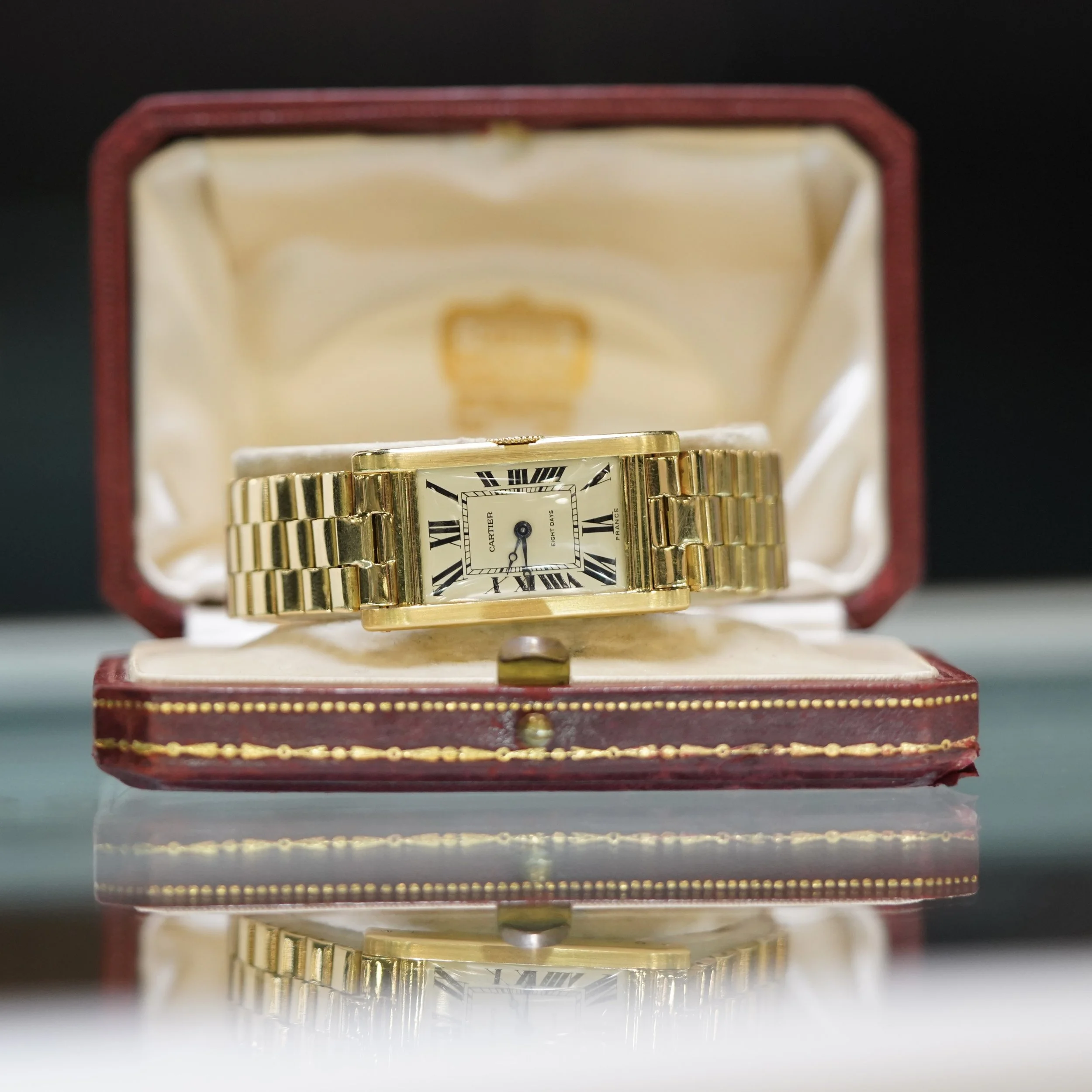

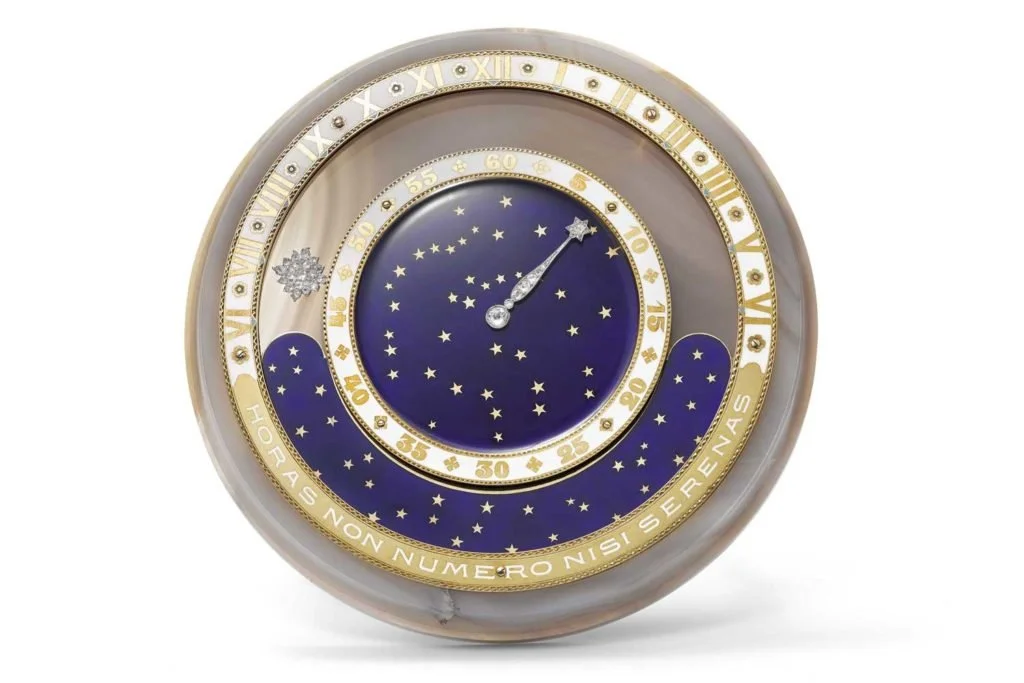

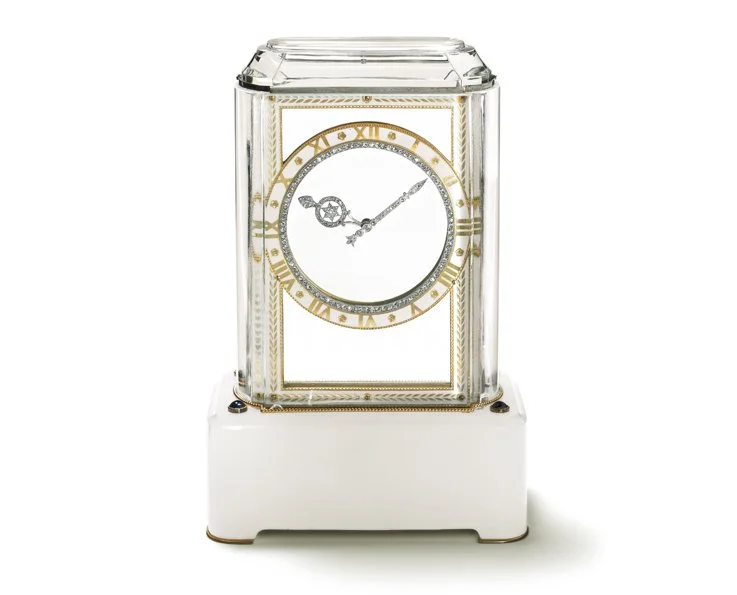
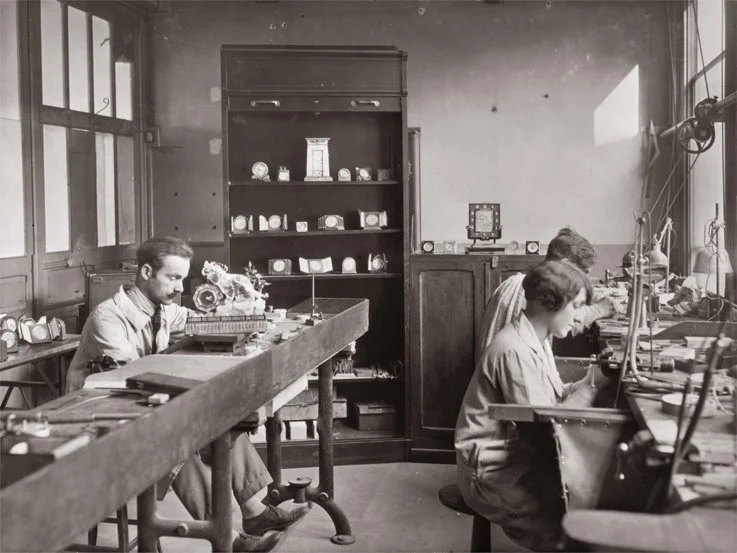
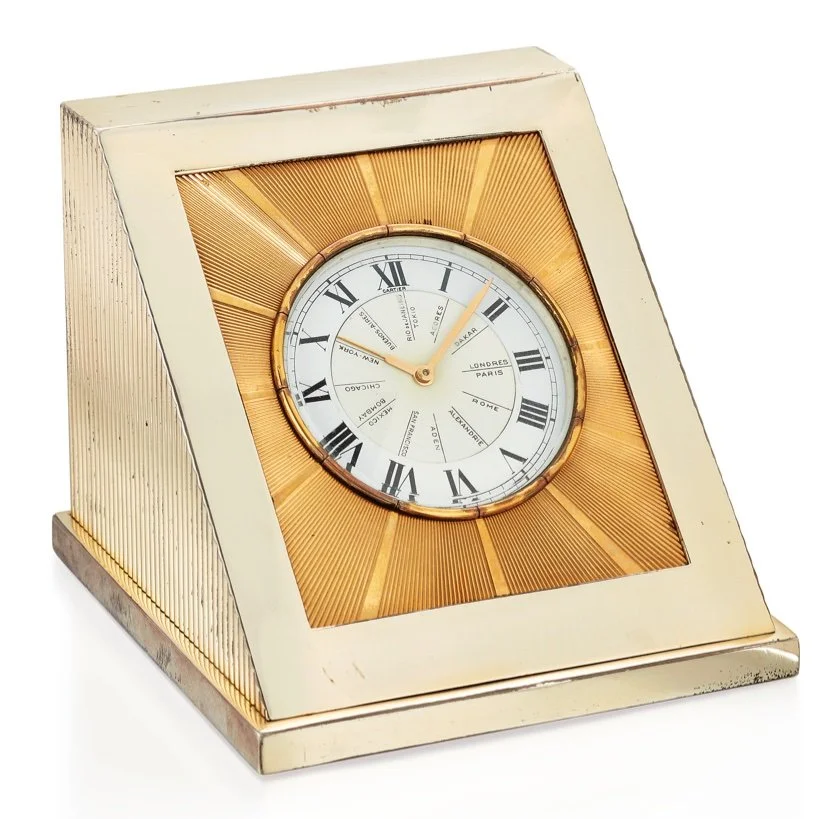
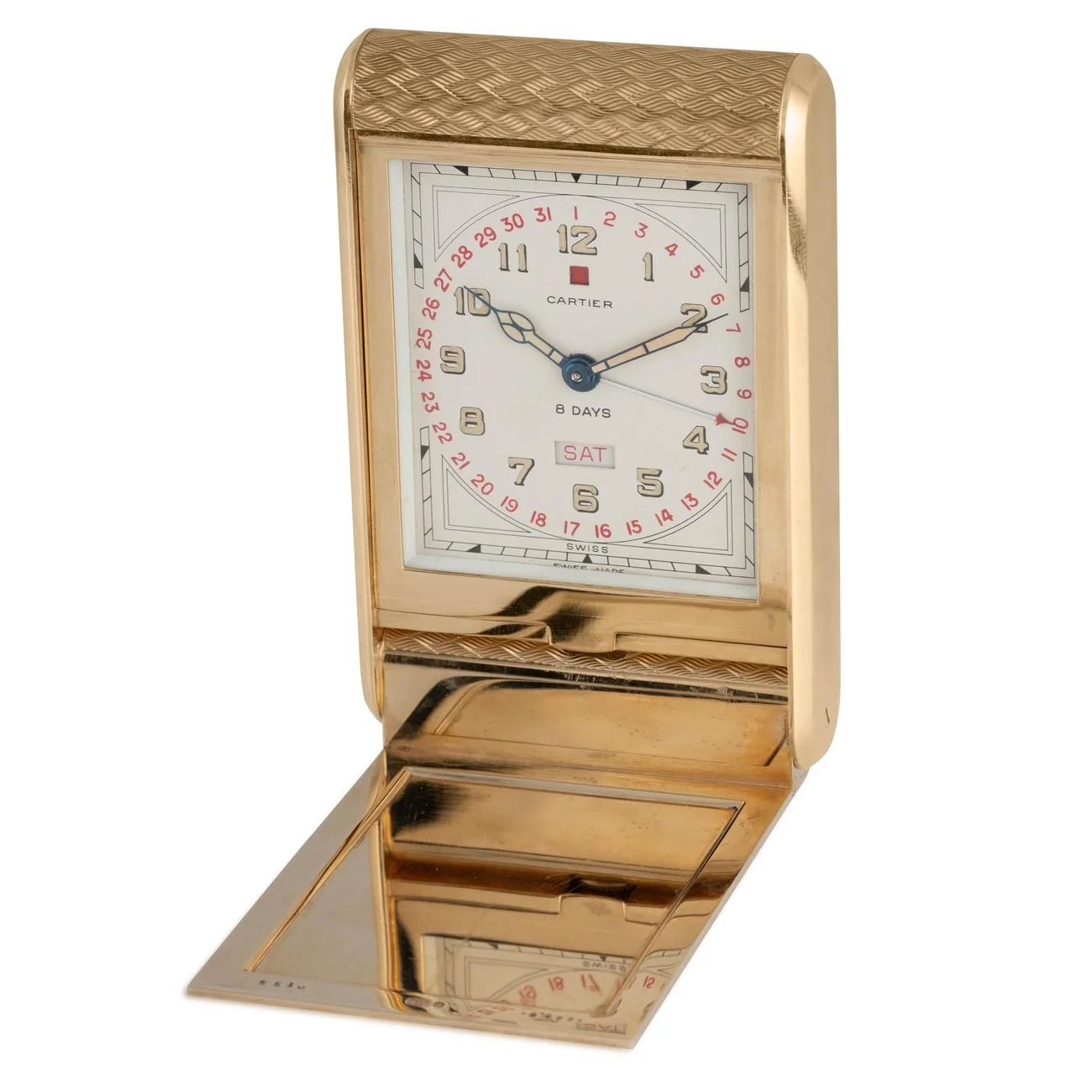

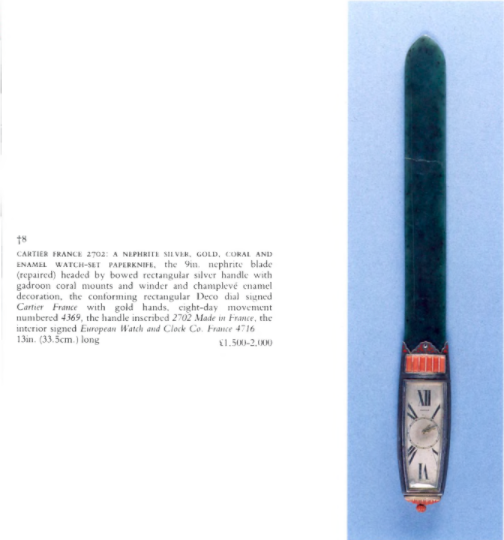





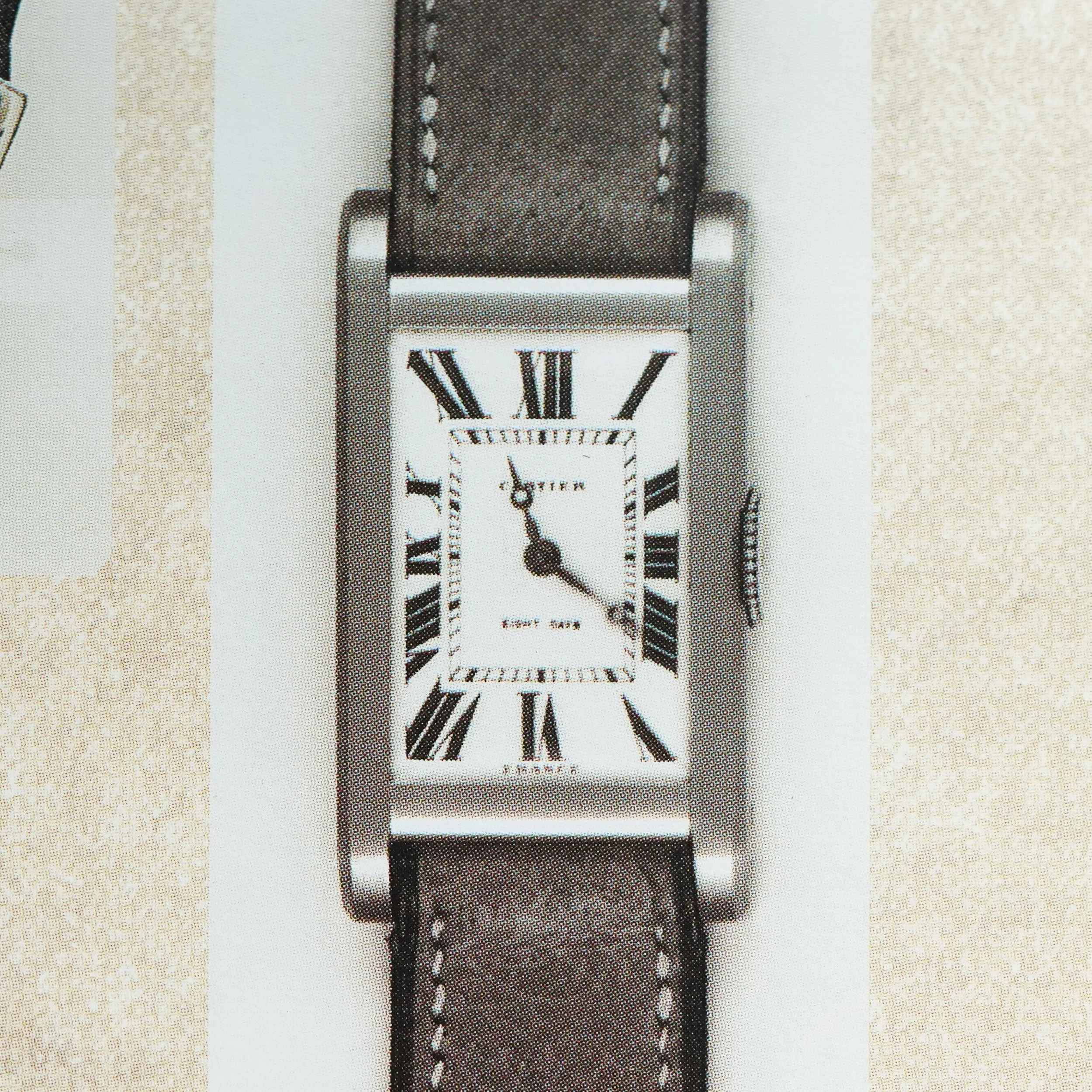




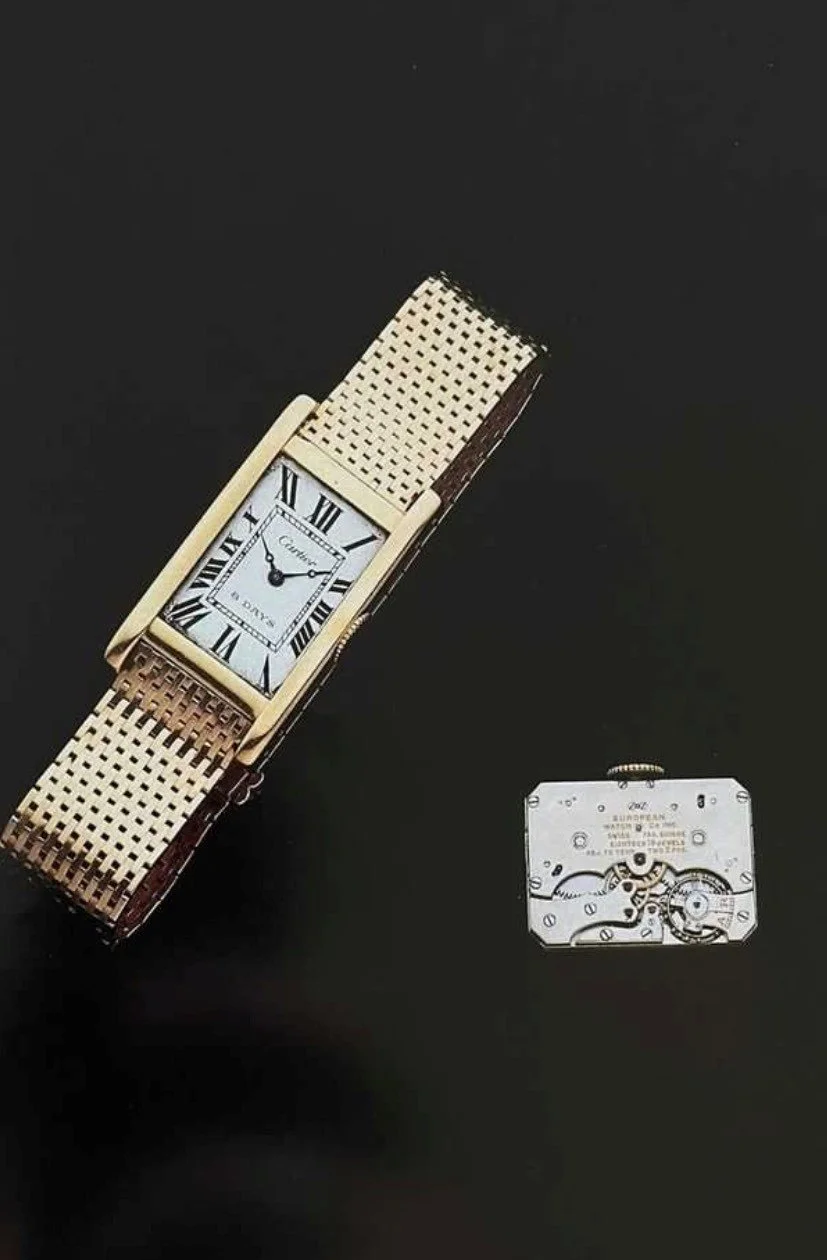




![Cartier 8 Days LeCoultre 124 Movement No. 34865 Case 28829 (28829 - 6434 - 34685 [28830]) (Circa 1940)](https://images.squarespace-cdn.com/content/v1/615cf0ec02ba0a4962cf2b7f/7d93af07-6ae2-43dc-91d9-bf50351f729b/Cartier+8+Days+LeCoultre+124+Movement+No.+34865+Case+28829+%2828829+-+6434+-+34685+%5B28830%5D%29+%28Circa+1940%29)
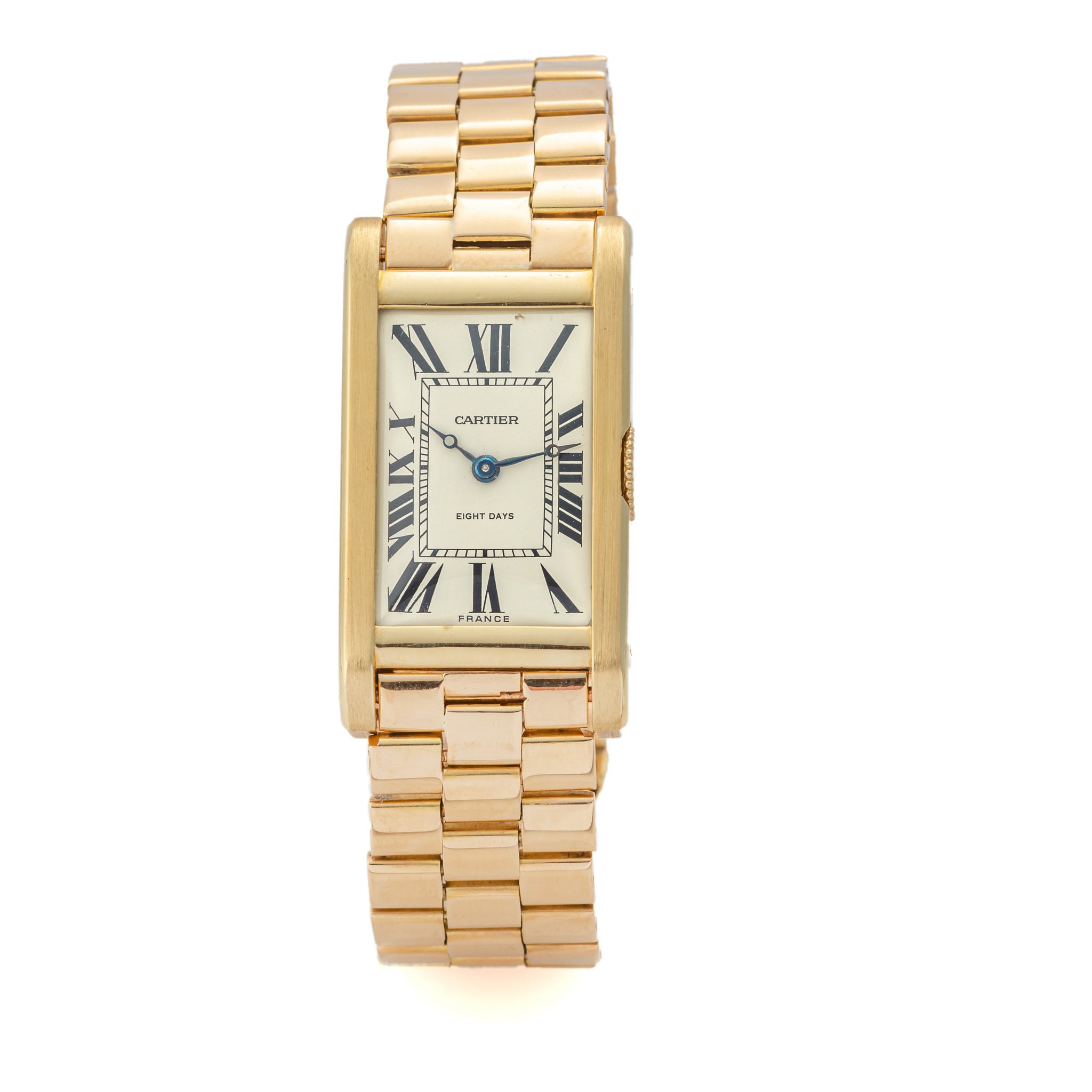
![Cartier 8 Days LeCoultre 124 Movement No. 34865 Case 28829 (28829 - 6434 - 34685 [28830]) (Circa 1940)](https://images.squarespace-cdn.com/content/v1/615cf0ec02ba0a4962cf2b7f/93aea327-de91-4cf5-aa57-3ed7981e09cb/Movement+No.+34865+Case+28829+%2828829+-+6434+-+34685+%5B28830%5D%29+%28Circa+1940%29)
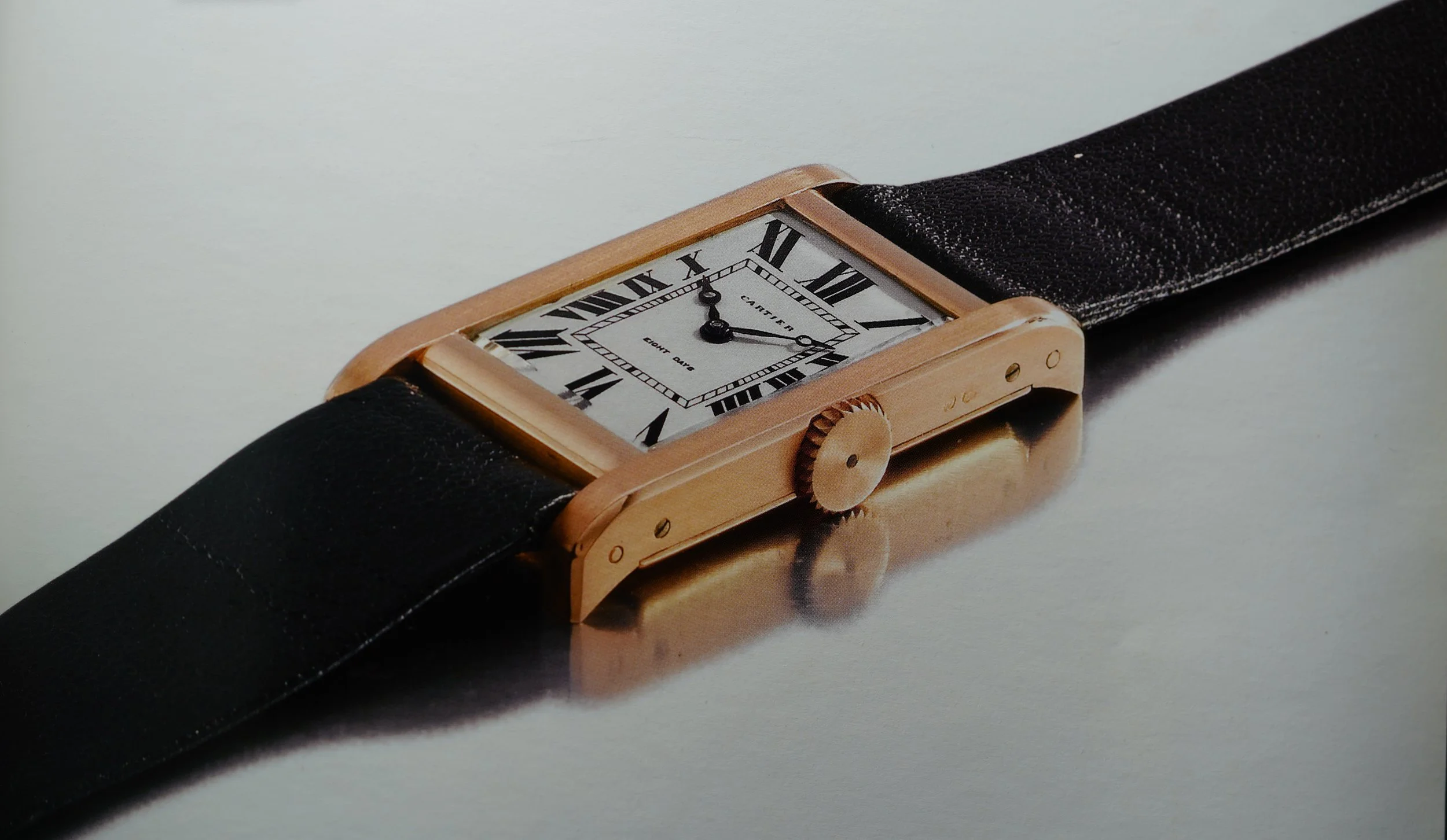
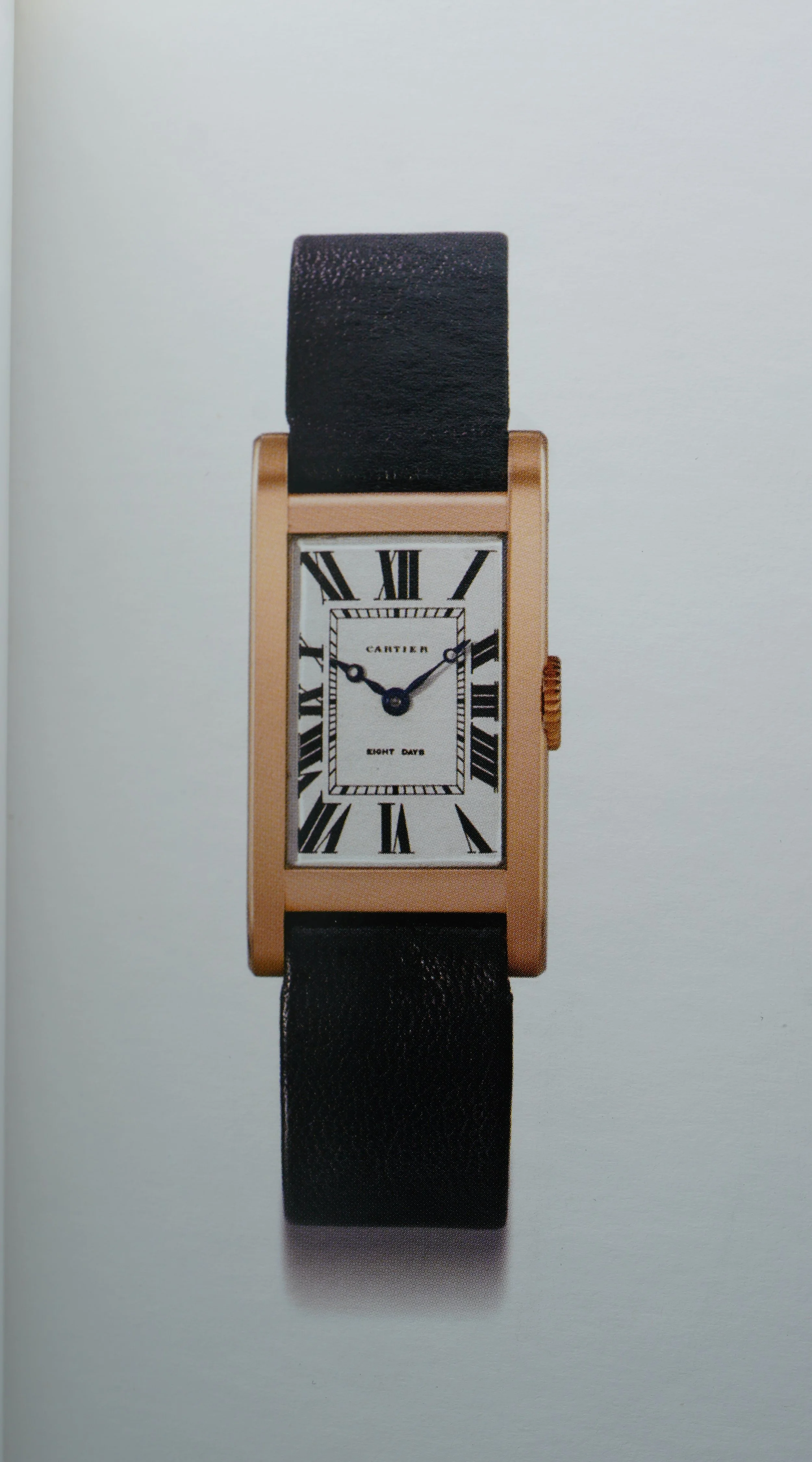


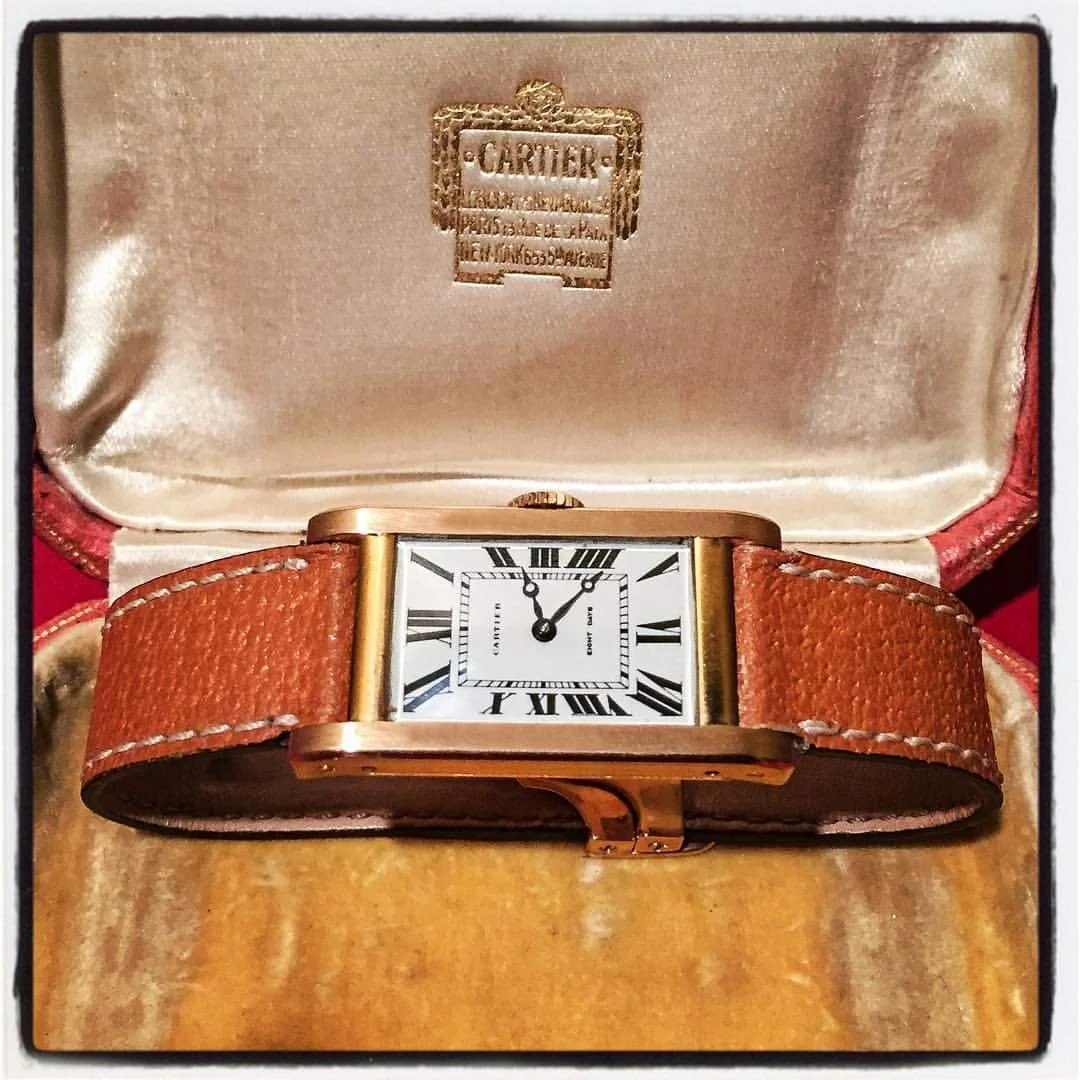
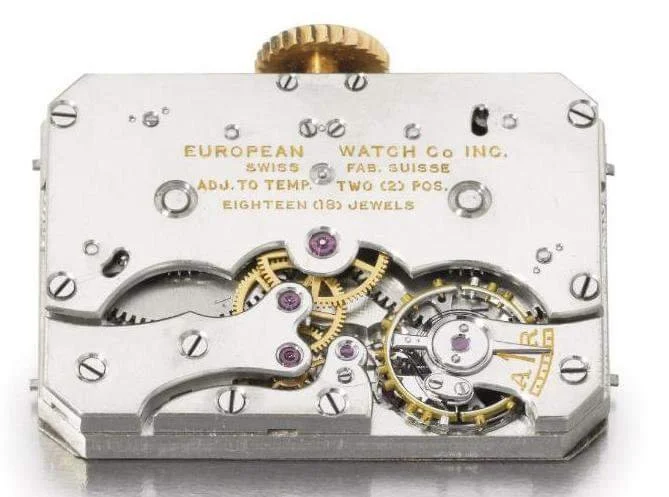










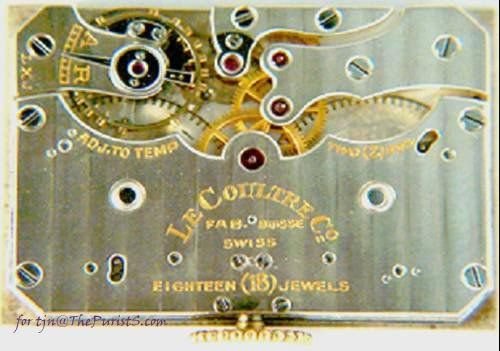

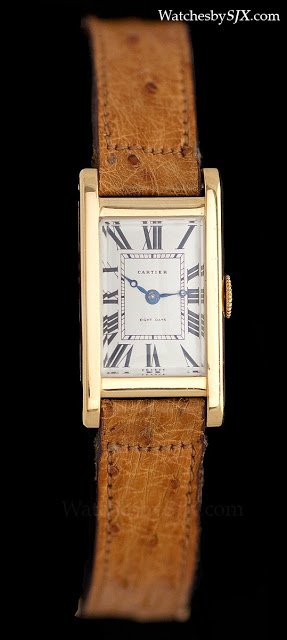
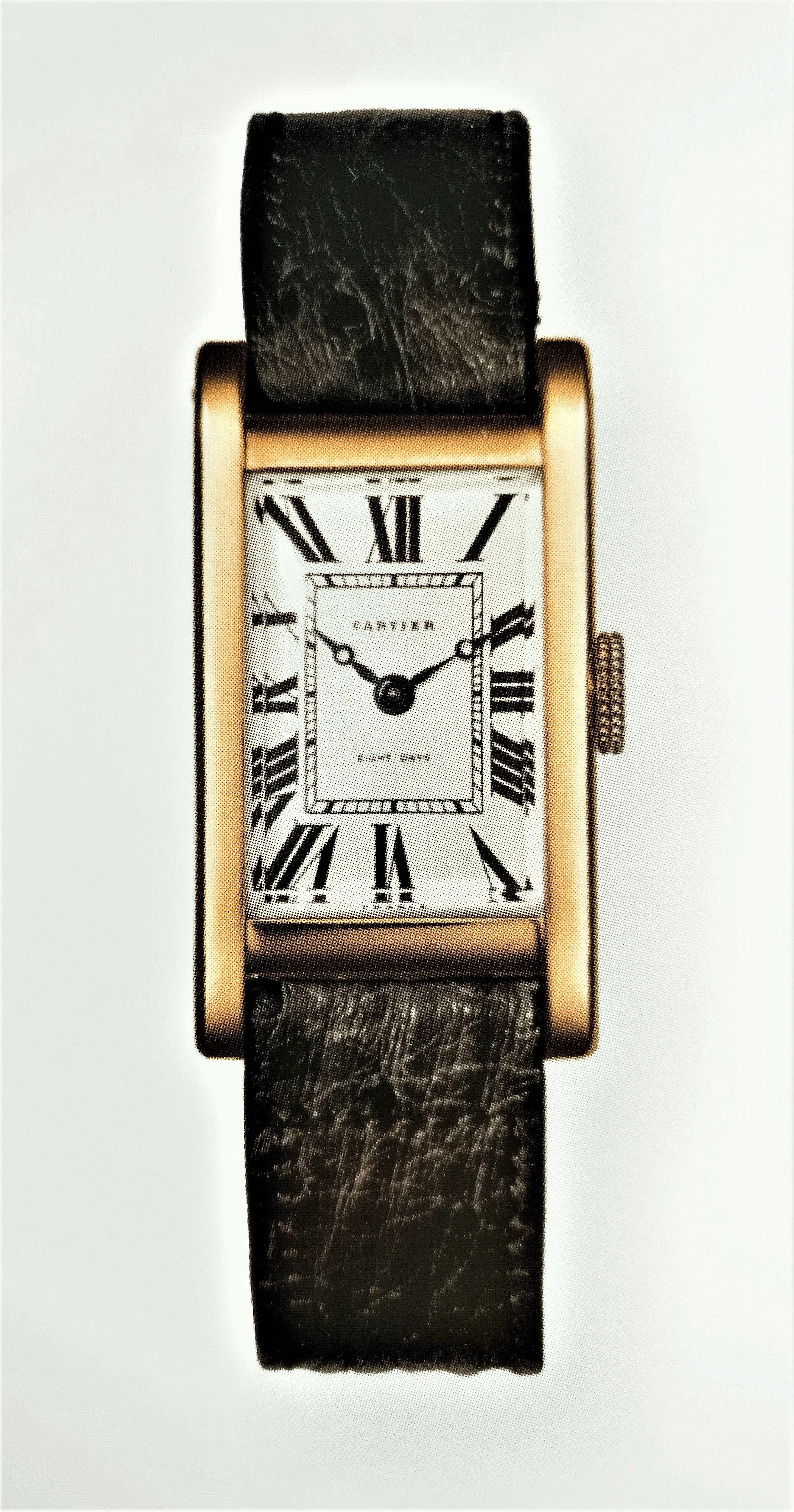


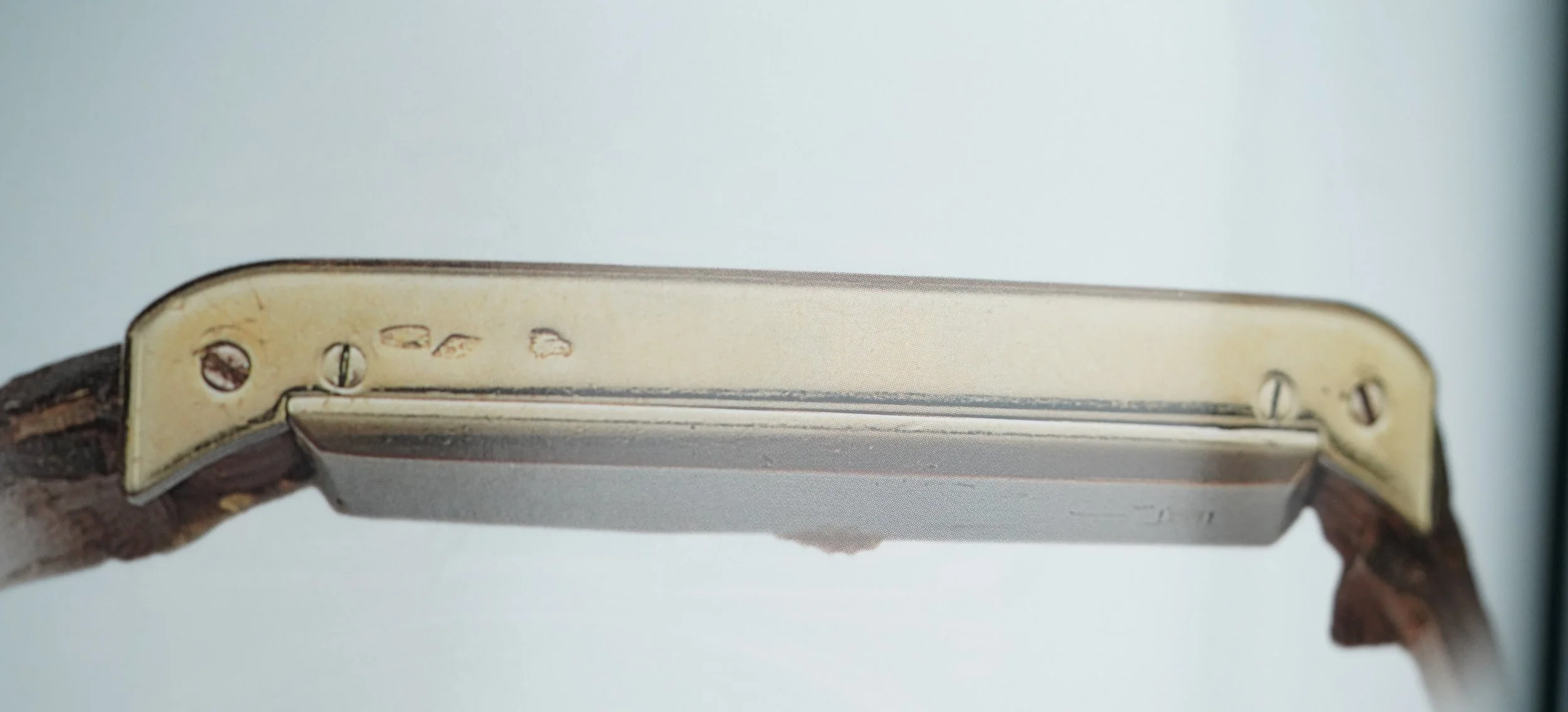




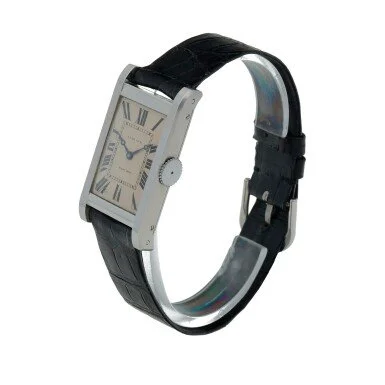
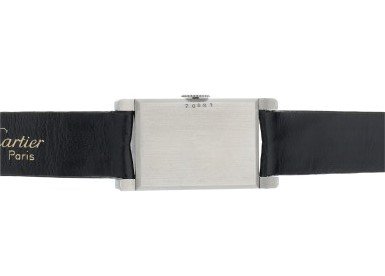
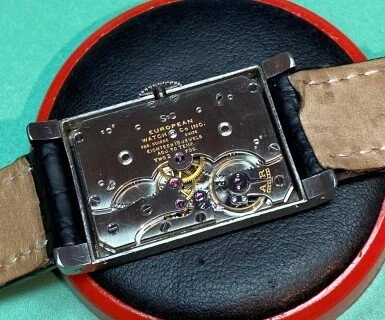


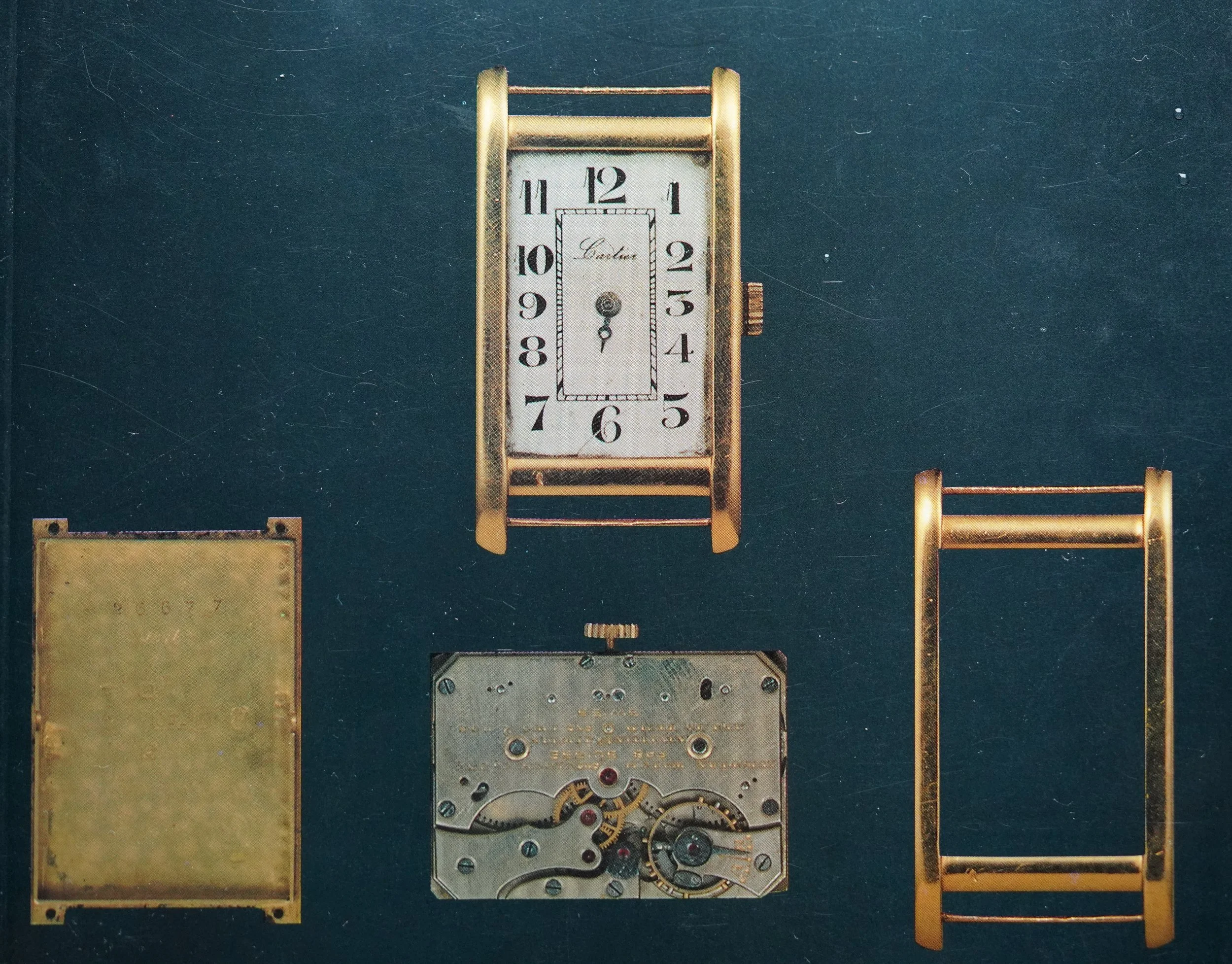
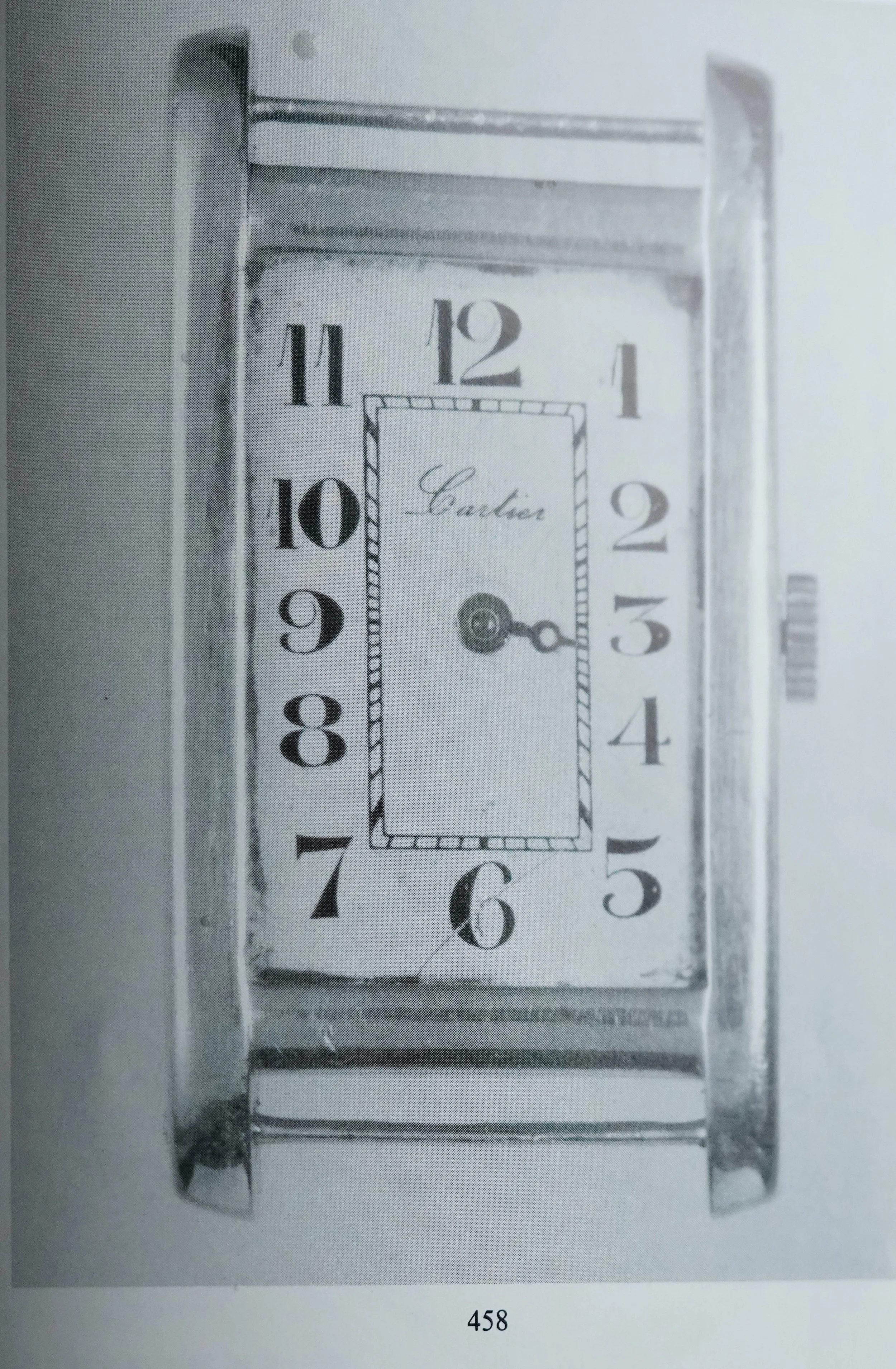
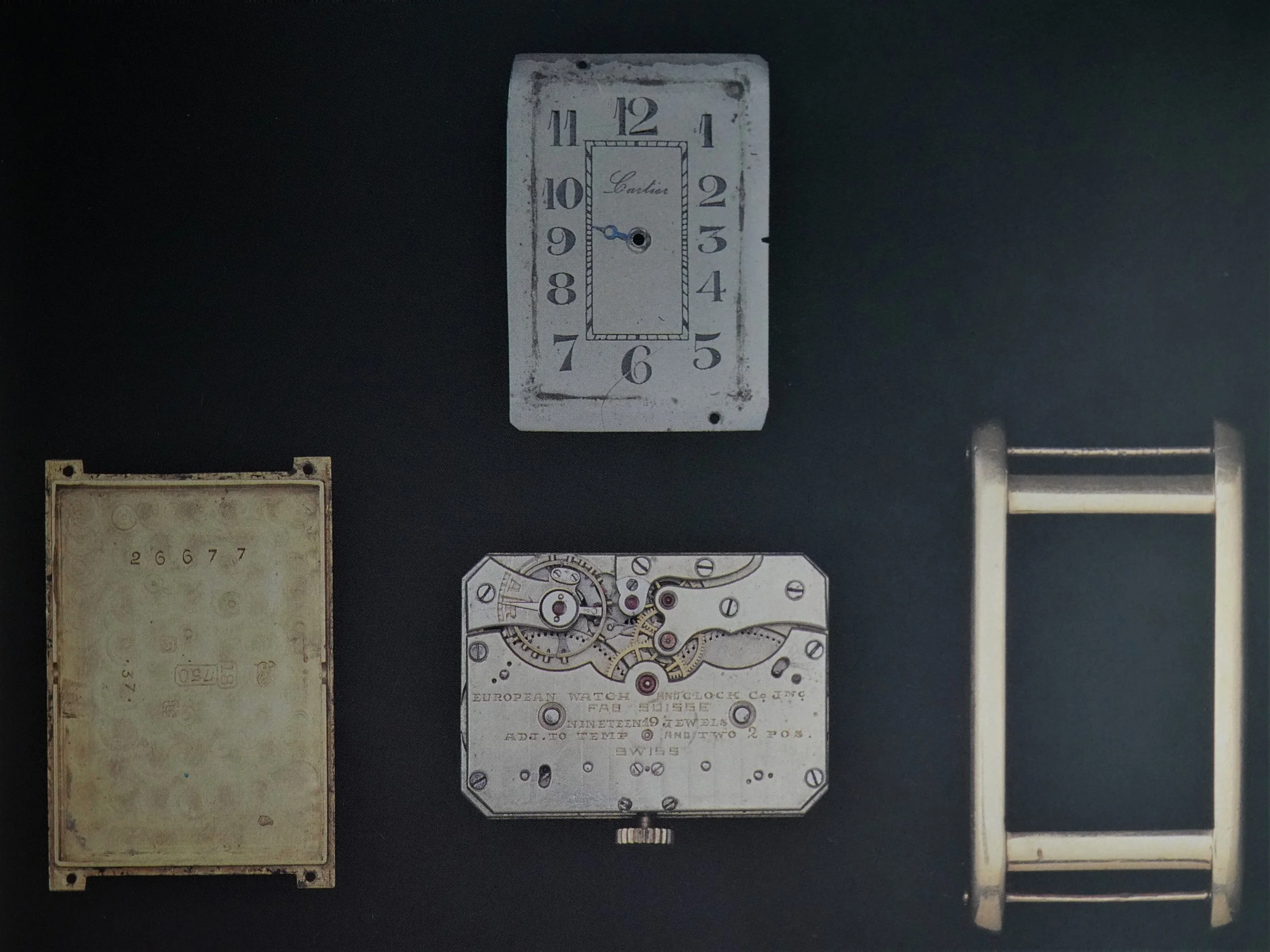
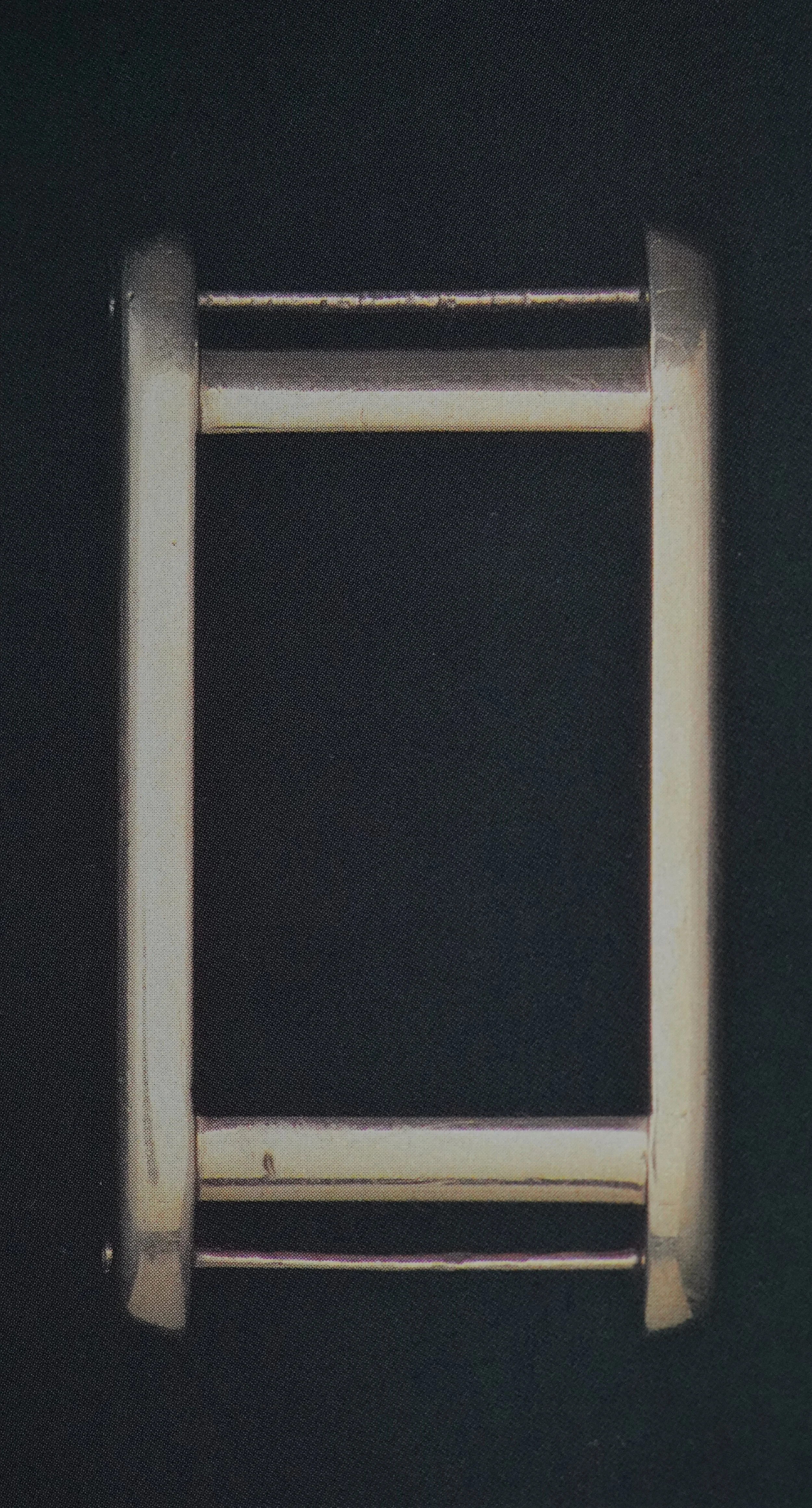
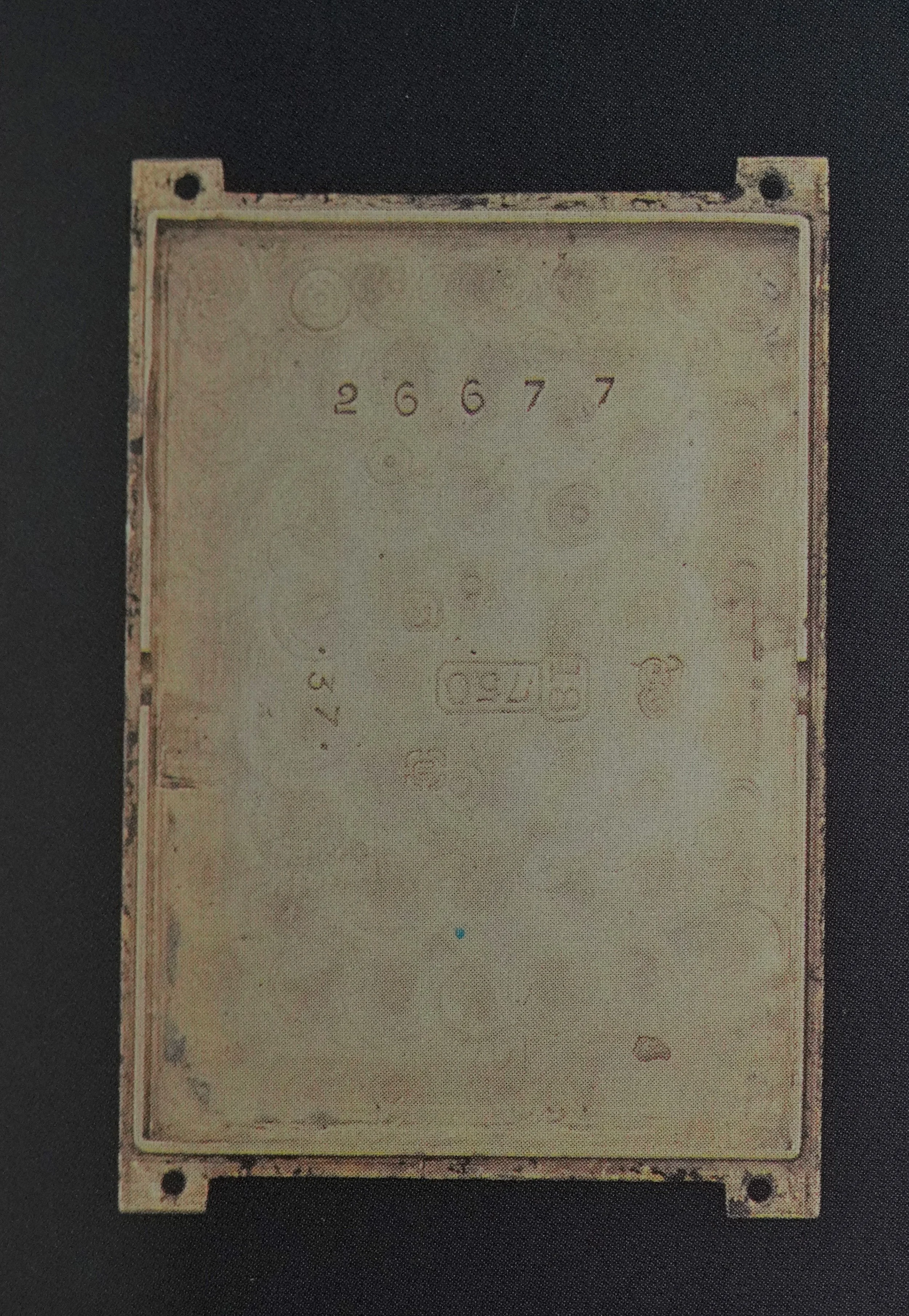




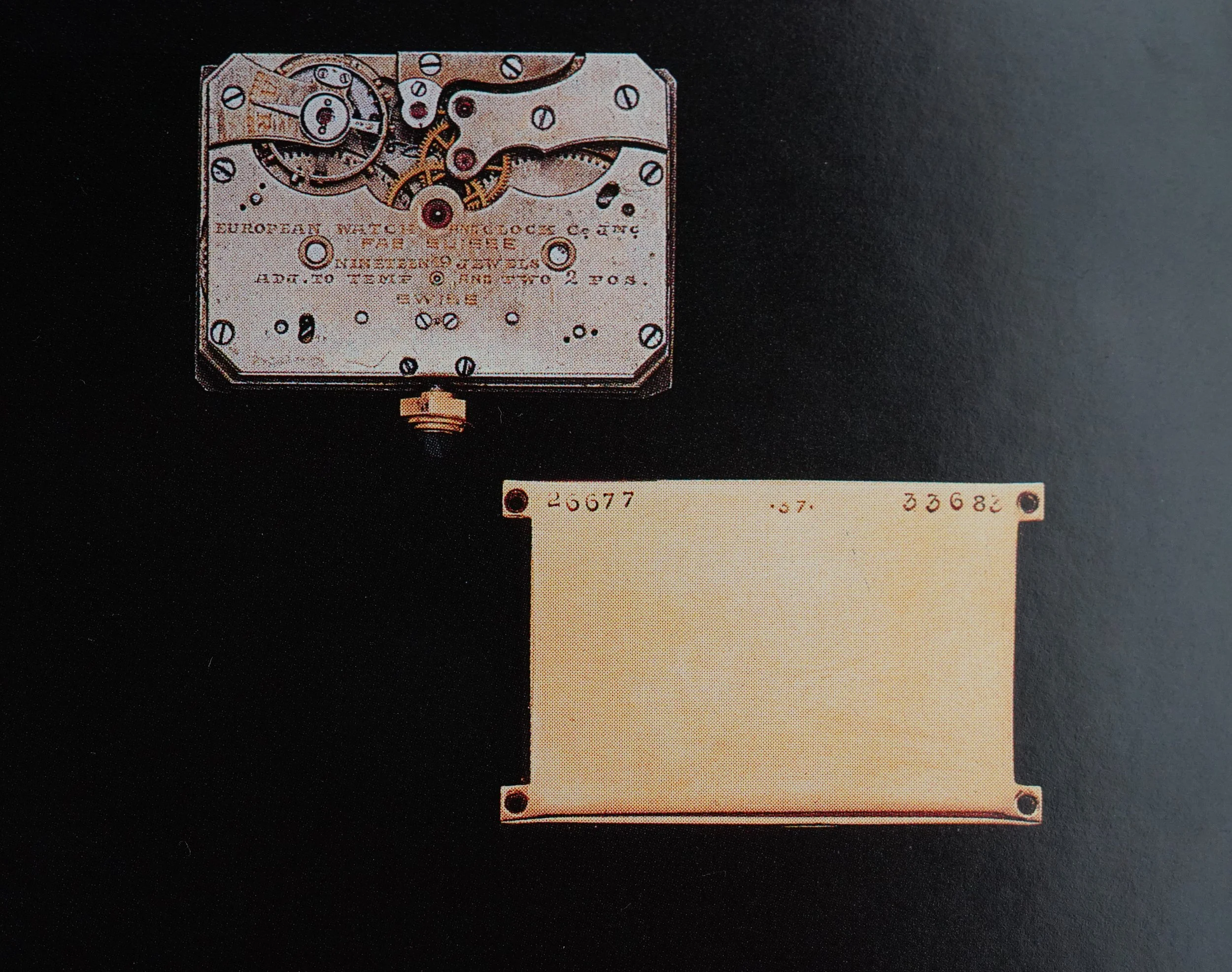

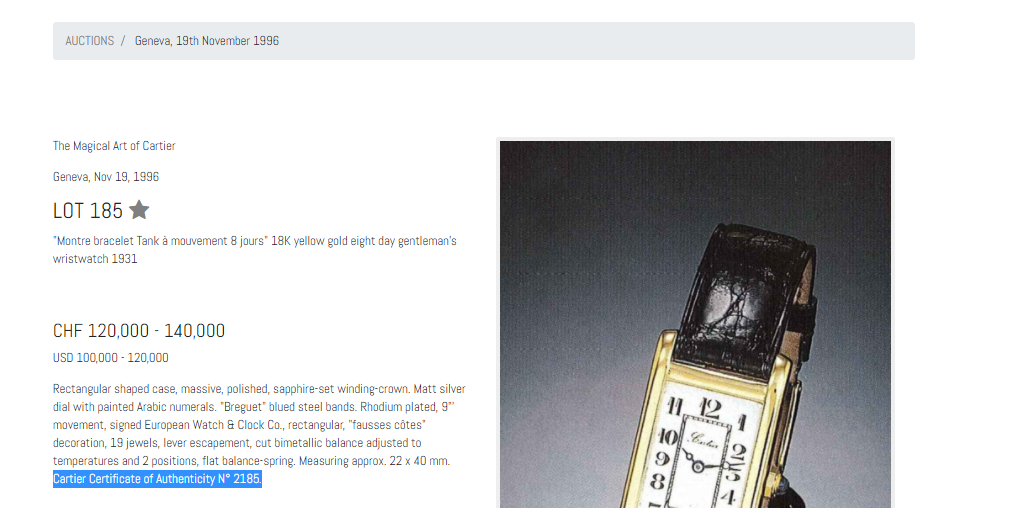
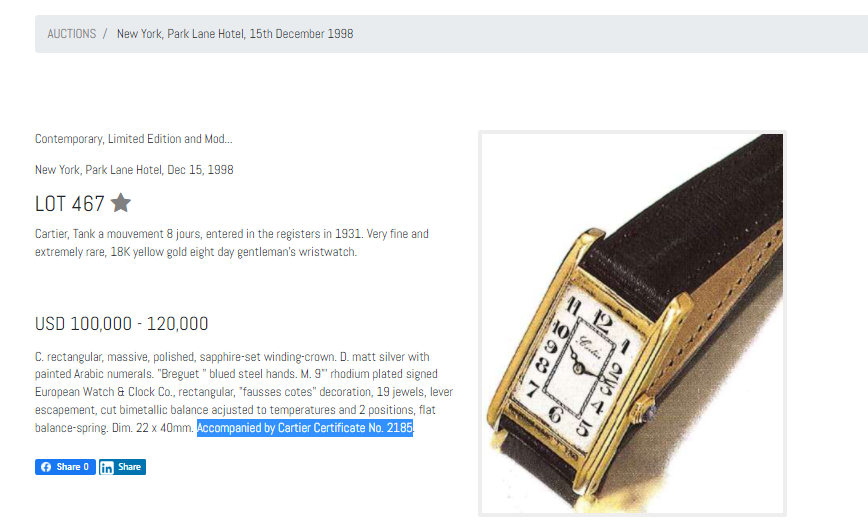

![Platinum 8 [Days] Cartier Wristwatch. “Possibly Unique” Rectangular Hinged Case, Hooded Lugs, and Stepped Case Profile. Movement No. 9395. Case No. 609395 (Circa “1930”) Christie’s Geneva Watches, and Wristwatches (November 14, 1990)](https://images.squarespace-cdn.com/content/v1/615cf0ec02ba0a4962cf2b7f/41c750fc-c5a9-445a-9ba8-1124206e47fe/IMG_20220211_122606__01.jpg)



